You’ll find some English neatly aligned below …
7月9日 星期一
今天多云,天气其实非常宜人,我和PJG决定在阿姆斯特丹市中心四处转转,看看这里的大街小巷。除了追踪了PJG父亲当年的足迹之外(他应该自己会记录),在这里记录一些阿姆斯特丹的独特吧。
自行车王国
阿姆斯特丹市中心其实很小,步行我感觉30分钟左右就能从繁忙的一边走到另一边。基本上市中心就是沿着中心火车站向外延扩展的半弧形,对我来说有点儿像北京的环线,但是这里由运河河道来分割的一圈一圈的环线。由于城市被运河分割的零零散散,自行车似乎是最好的交通工具。荷兰是世界上人均拥有自行车最多的国家,人均拥有约1.1辆自行车,而且据纽约时报2013年的报道,阿姆斯特丹的自行车出行比例达到了32%,虽然也许中国人会觉得不服,但是因为人口多,人均拥有量和出行比例是远远低于荷兰的。我俩在这里也亲眼目睹了这个自行车盛况。各式各样的自行车,到处随便的停放,而且有自行车专用通道,骑自行车的人经常来势凶猛,奔驰而过。
Monday, July 9th
It was cloudy today and the weather was very pleasant. We decided to walk around Amsterdam’s city centre to explore the streets. In addition to tracking the footsteps of PJG’s father through some of his photos that year (he should blog that), we captured some of Amsterdam’s uniqueness.
Bicycle kingdom
The city centre of Amsterdam is actually very small. I feel like I could walk from the busy side to the opposite side in less than 30 minutes. Basically, the city center is a semi-circle extending out from the central railway station. For me, it is a bit like Beijing’s ring line, but here it is a ring of canals that are divided by other canal channels. Bicycles seem to be the best means of transportation because the city is segmented by many canals. The Netherlands has the largest number of bicycles per capita in the world, with about 1.1 bicycles per person. According to the New York Times, 32% of the people use bicycles as their main means of transportation. Although Chinese people may think they are the bicycle kings, but because of China’s large population, the per person ownership and use is much lower than in the Netherlands. We witnessed this bicycle phenomenon first hand: a wide variety of bicycles of all shapes and sizes and colors parked everywhere with bicycle-only lanes and aggressive cyclists whisking by out of nowhere.
The bicycle has the right of way in Amsterdam.
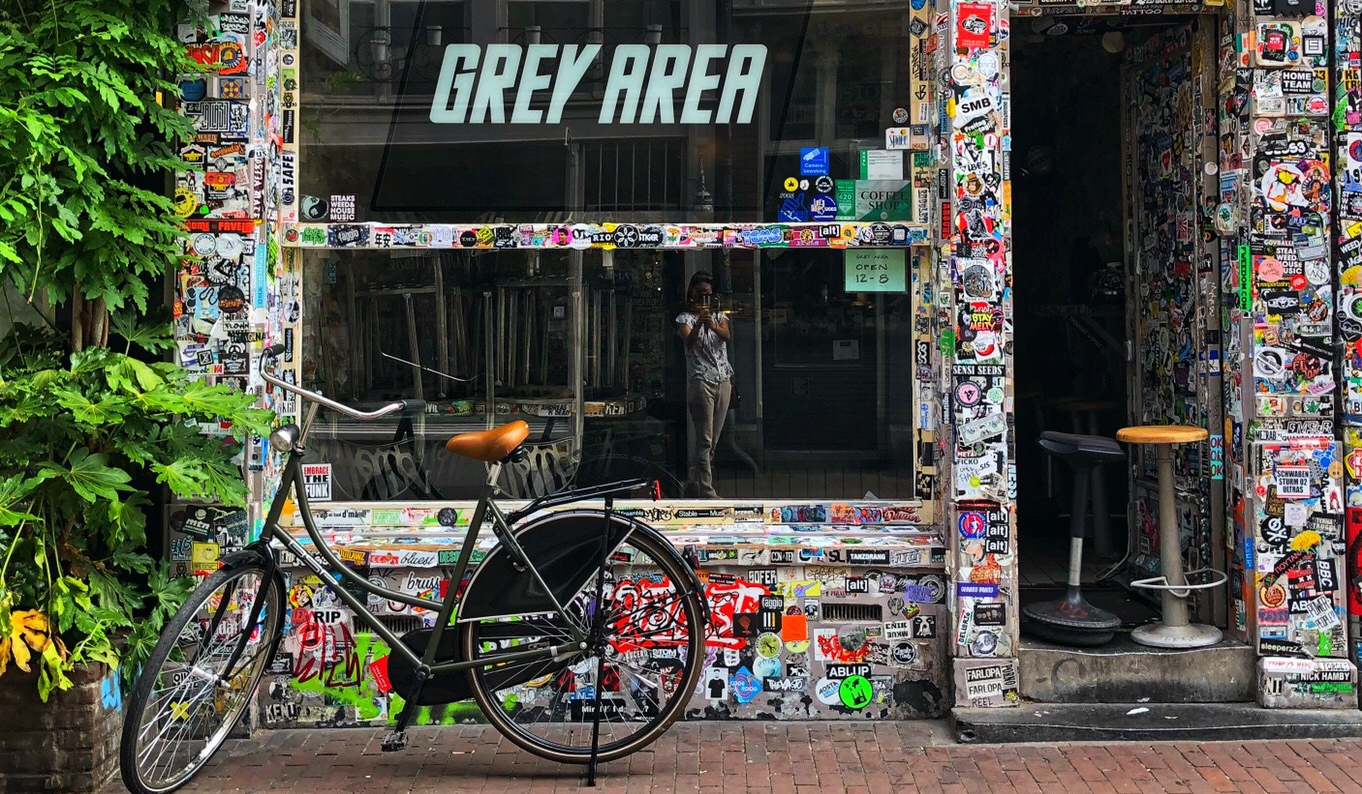


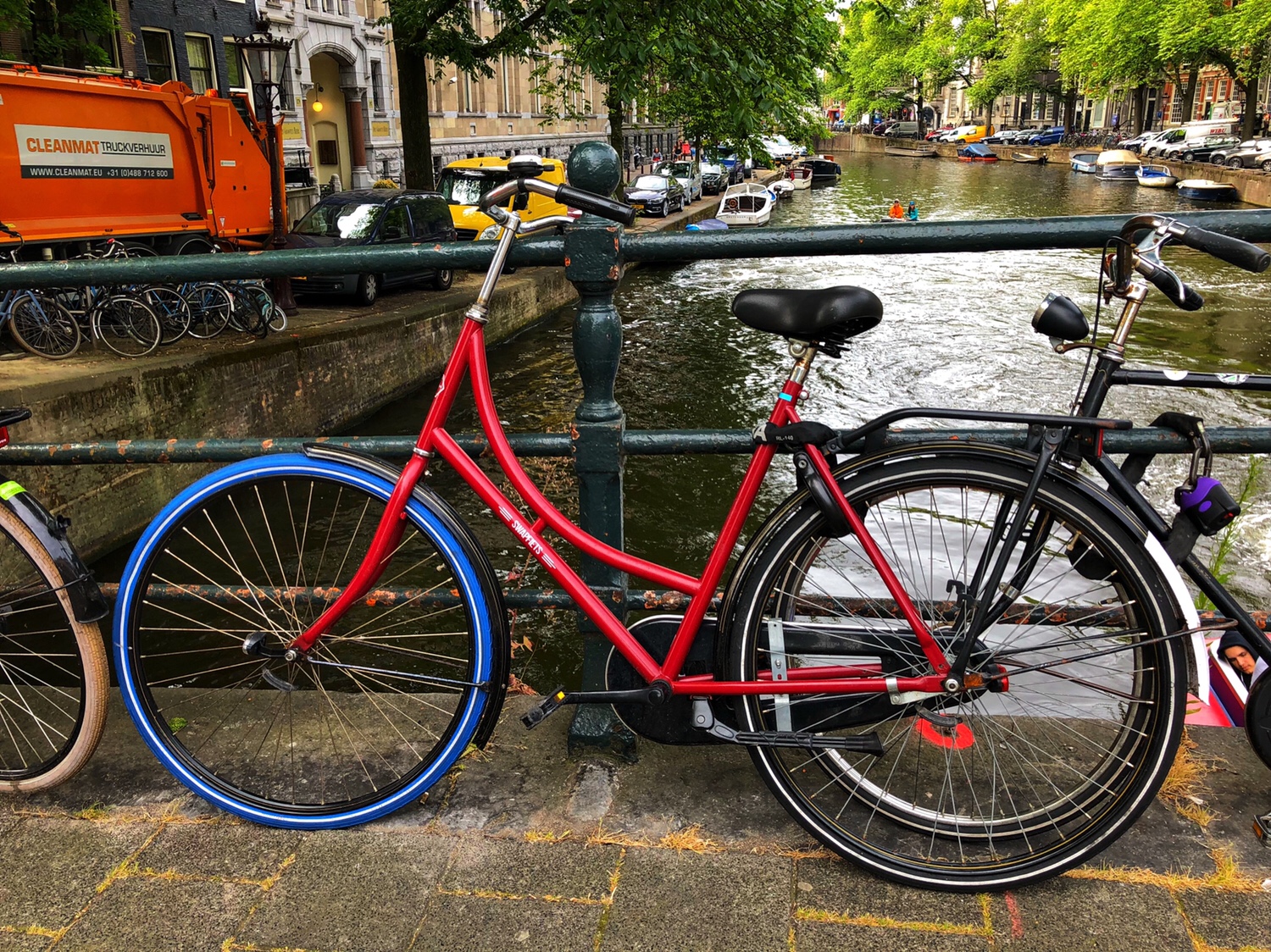

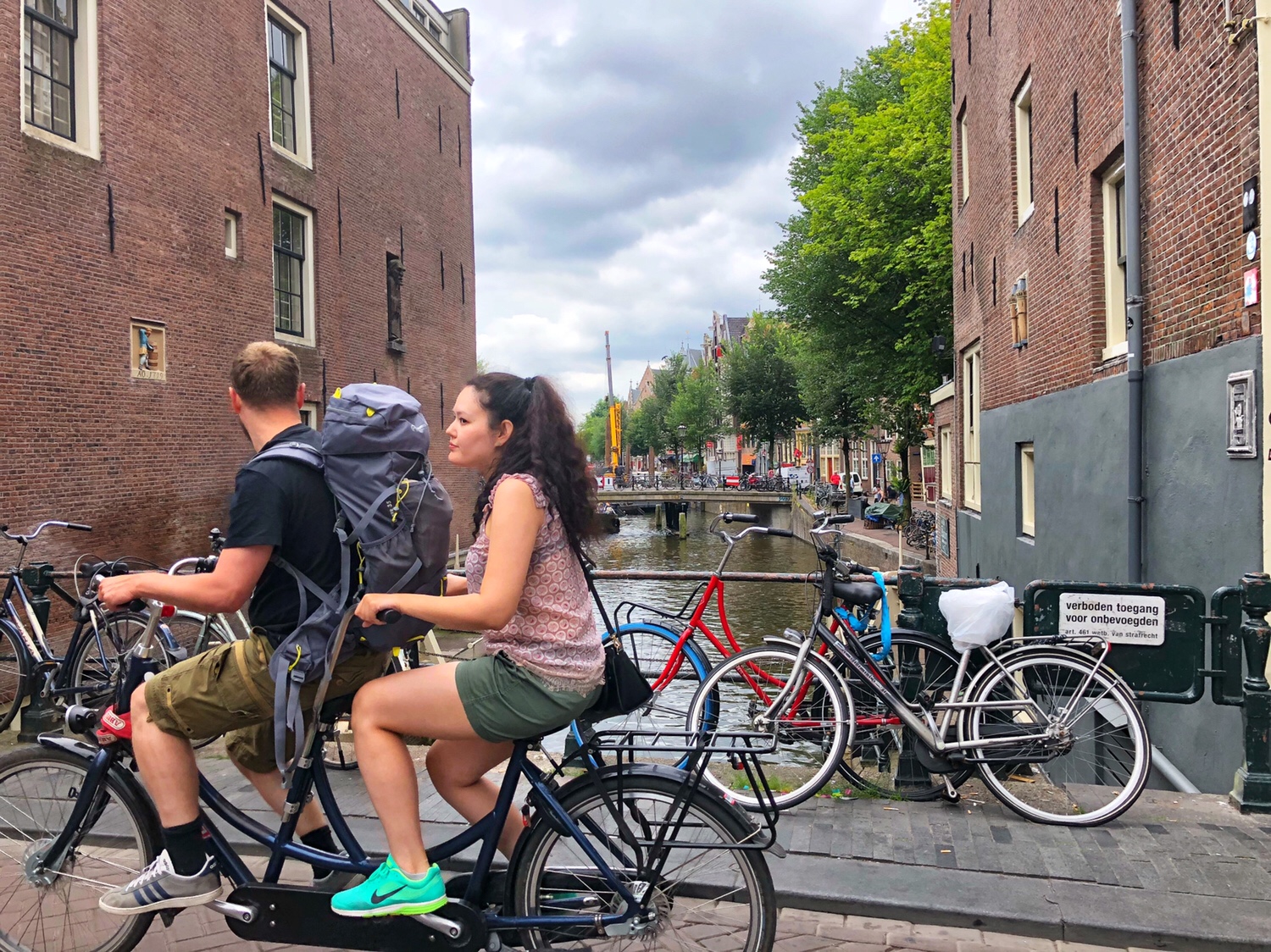
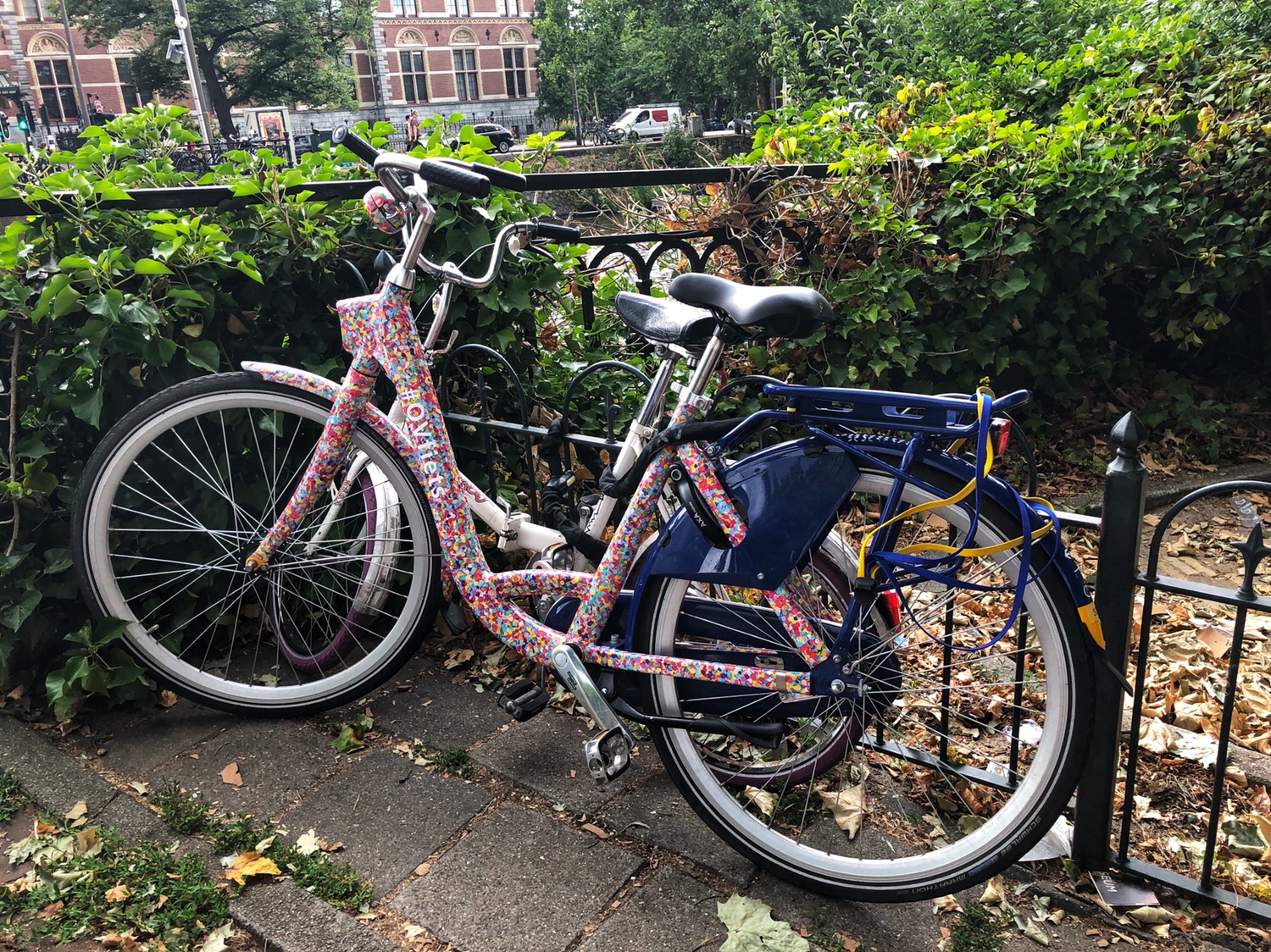
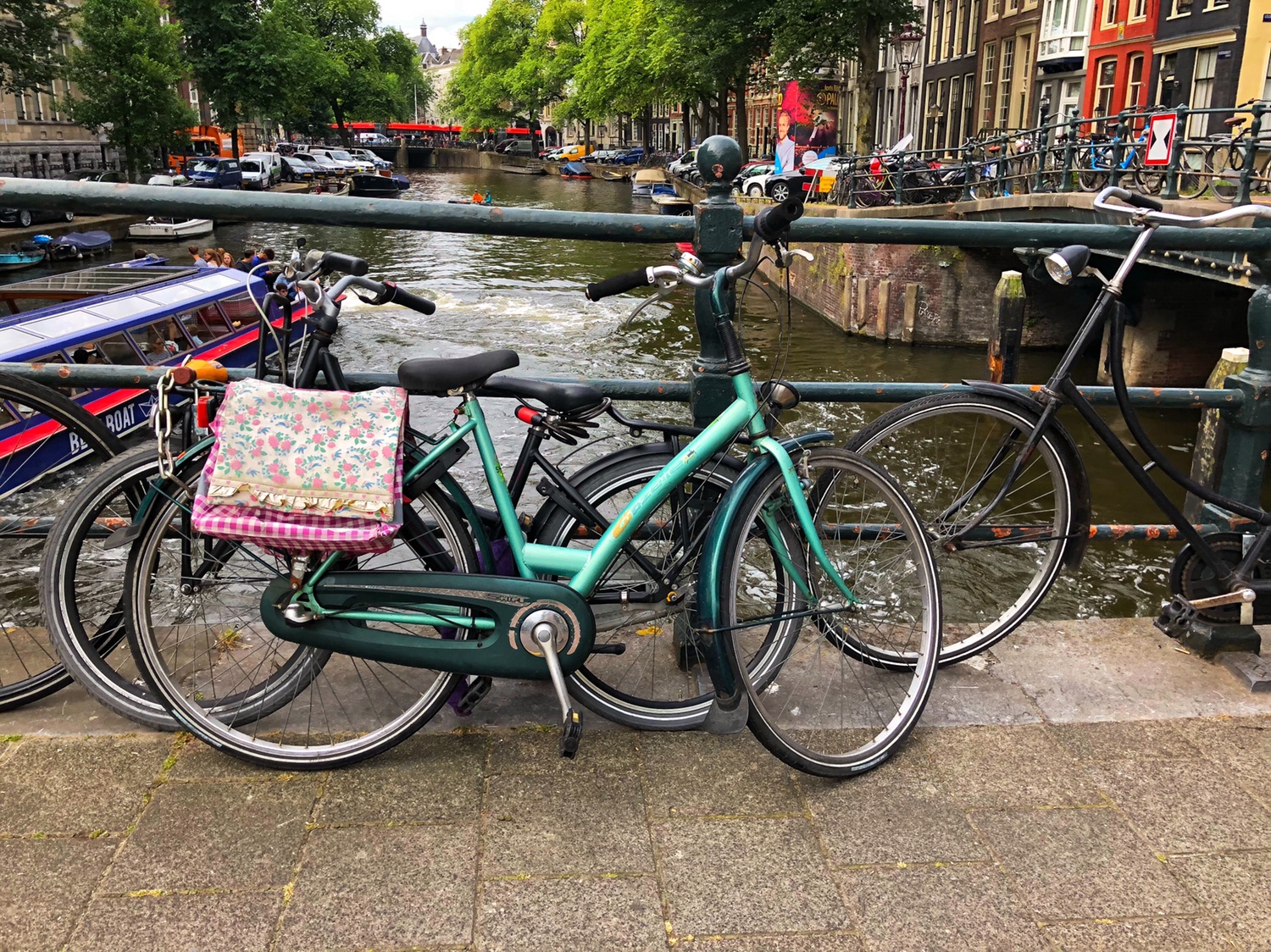

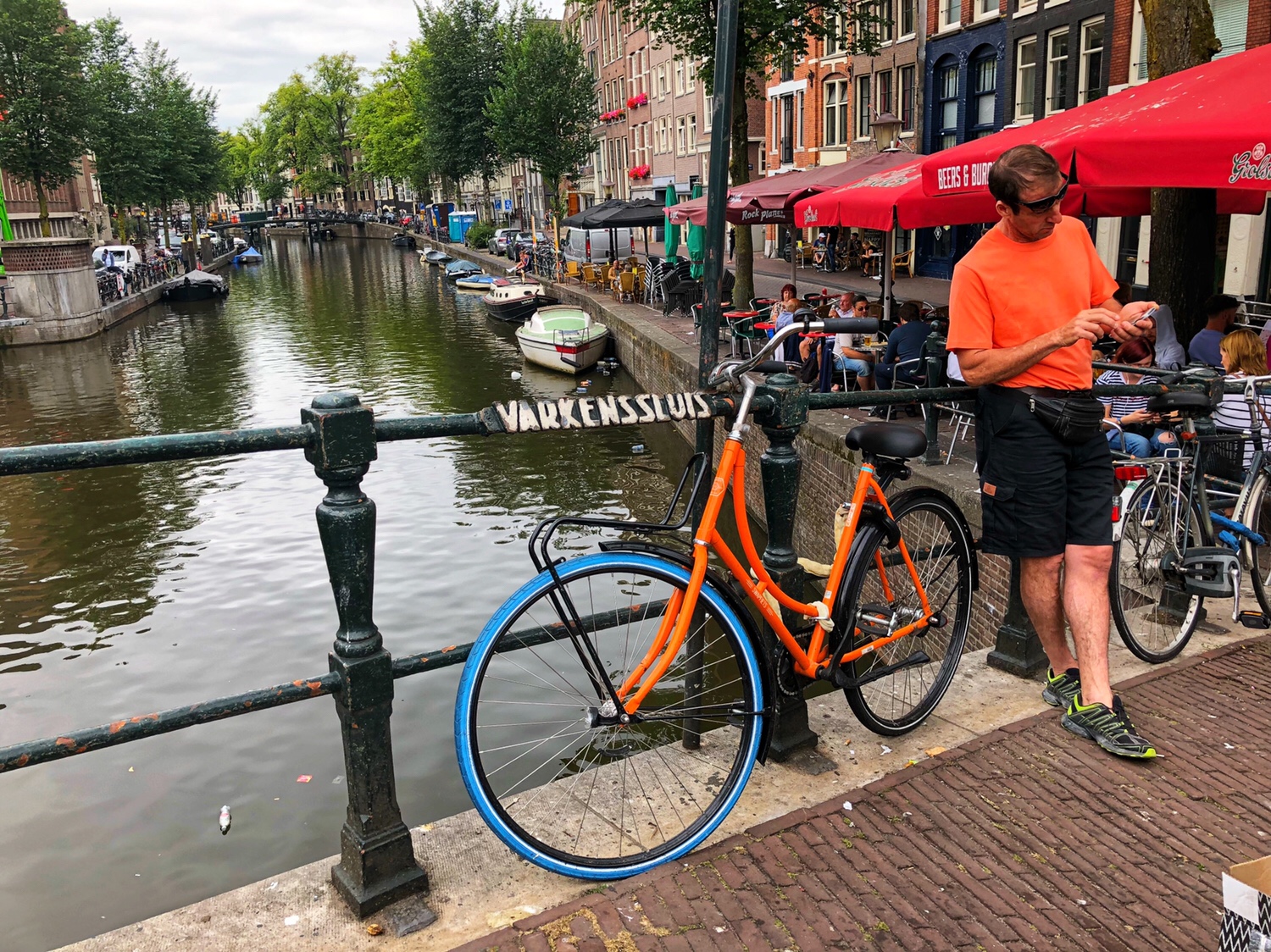


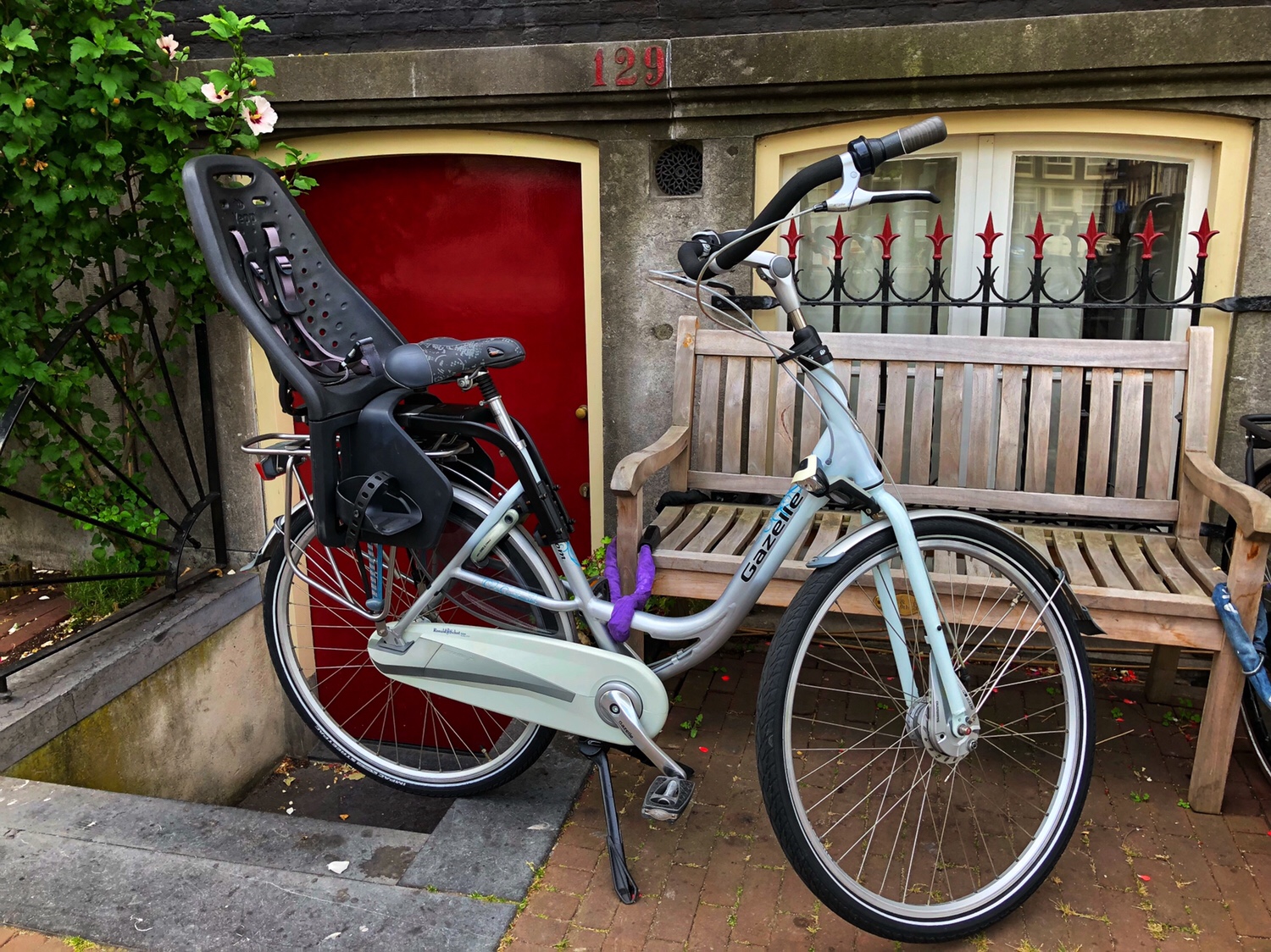
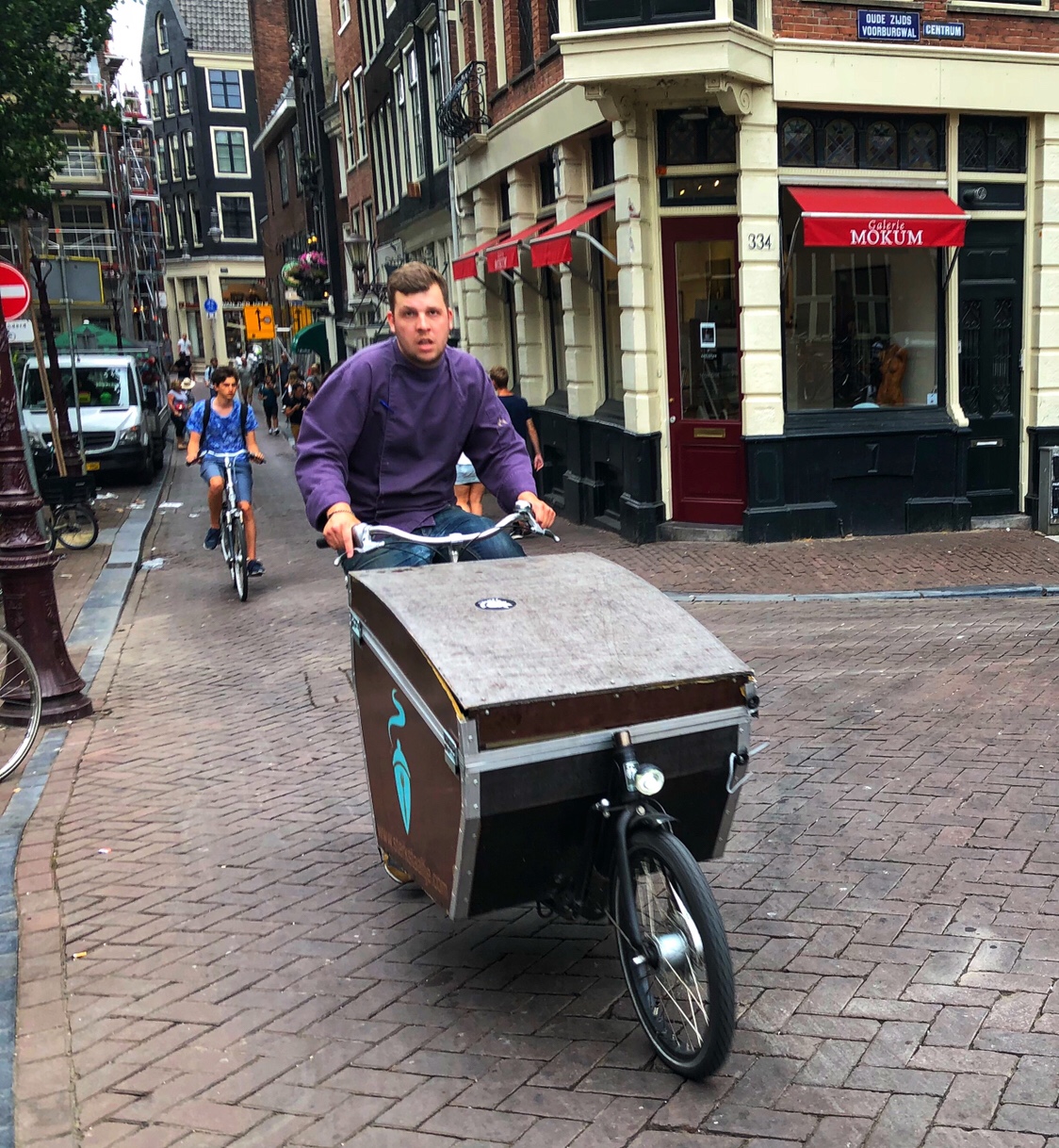
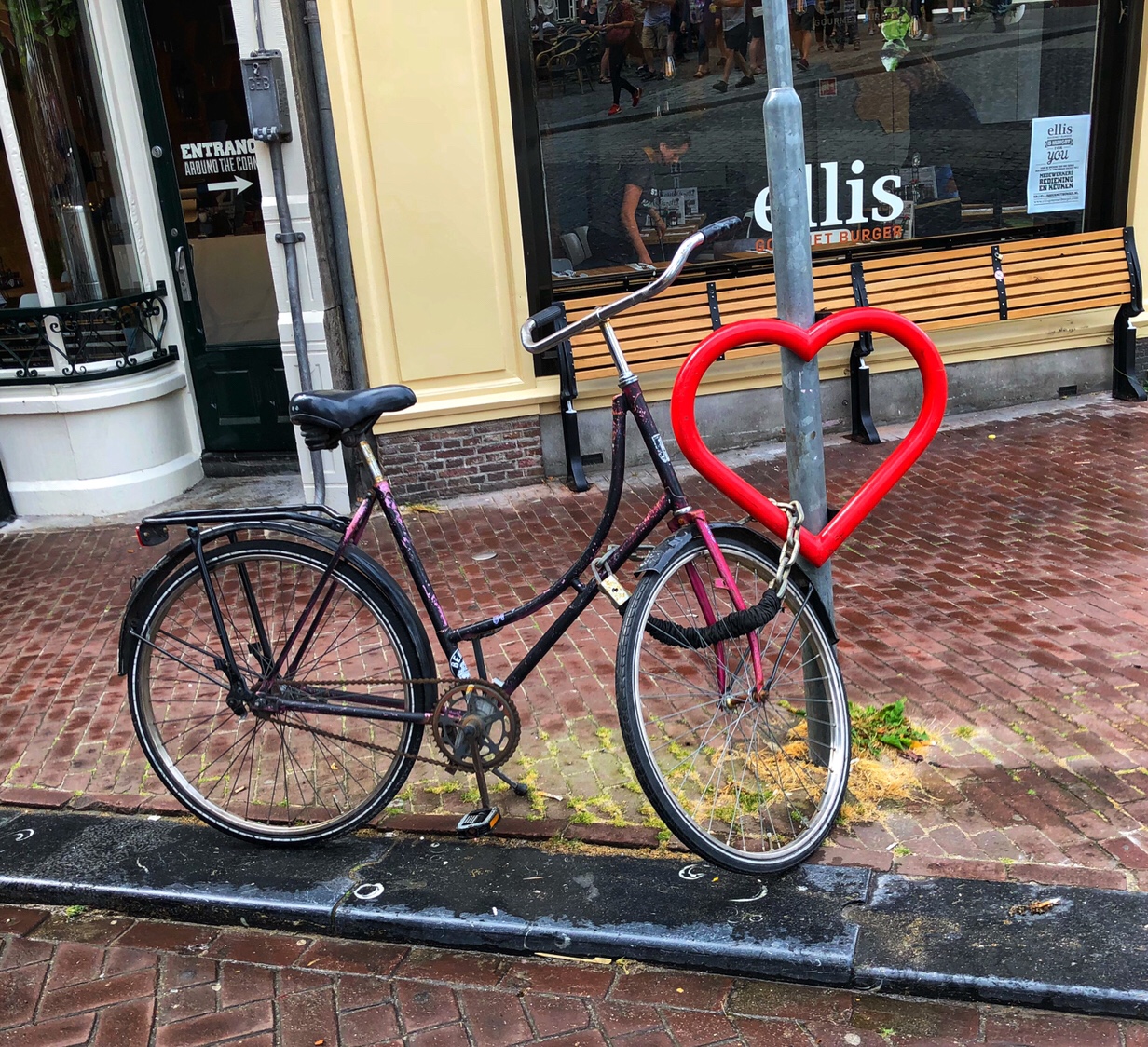
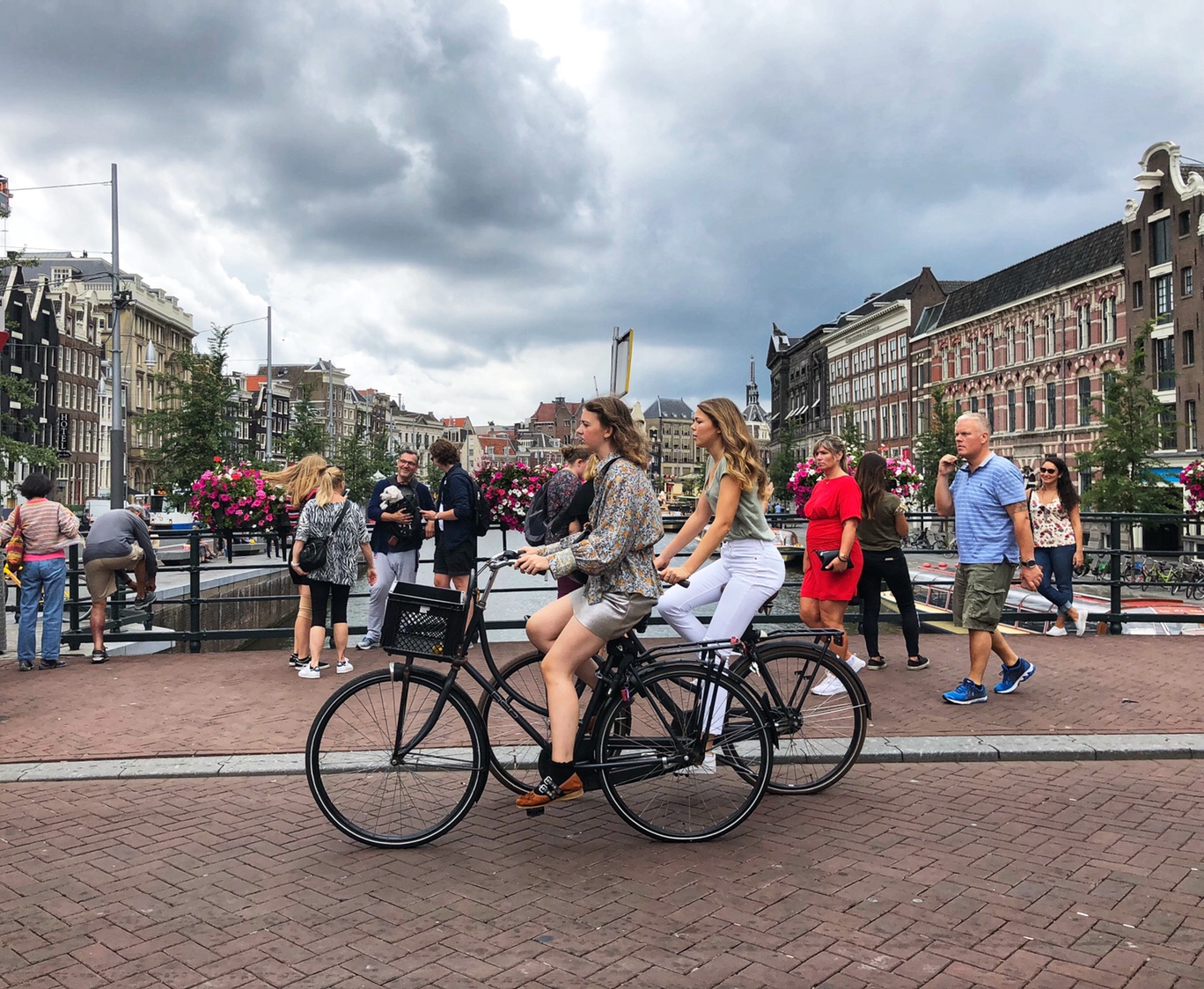
可以装小孩和物品的带车斗的自行车
Bicycles with a bucket that can hold children or other things
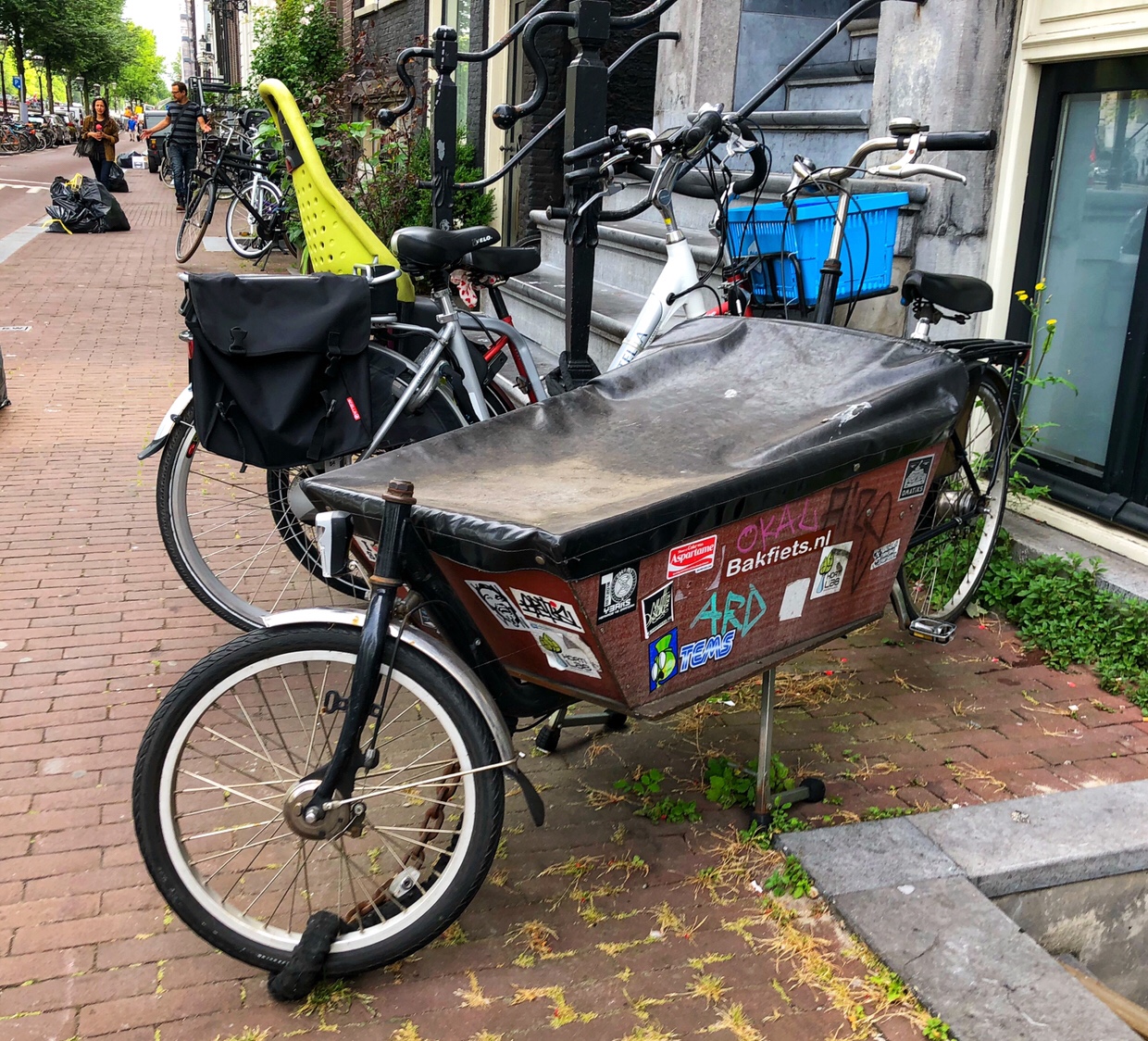
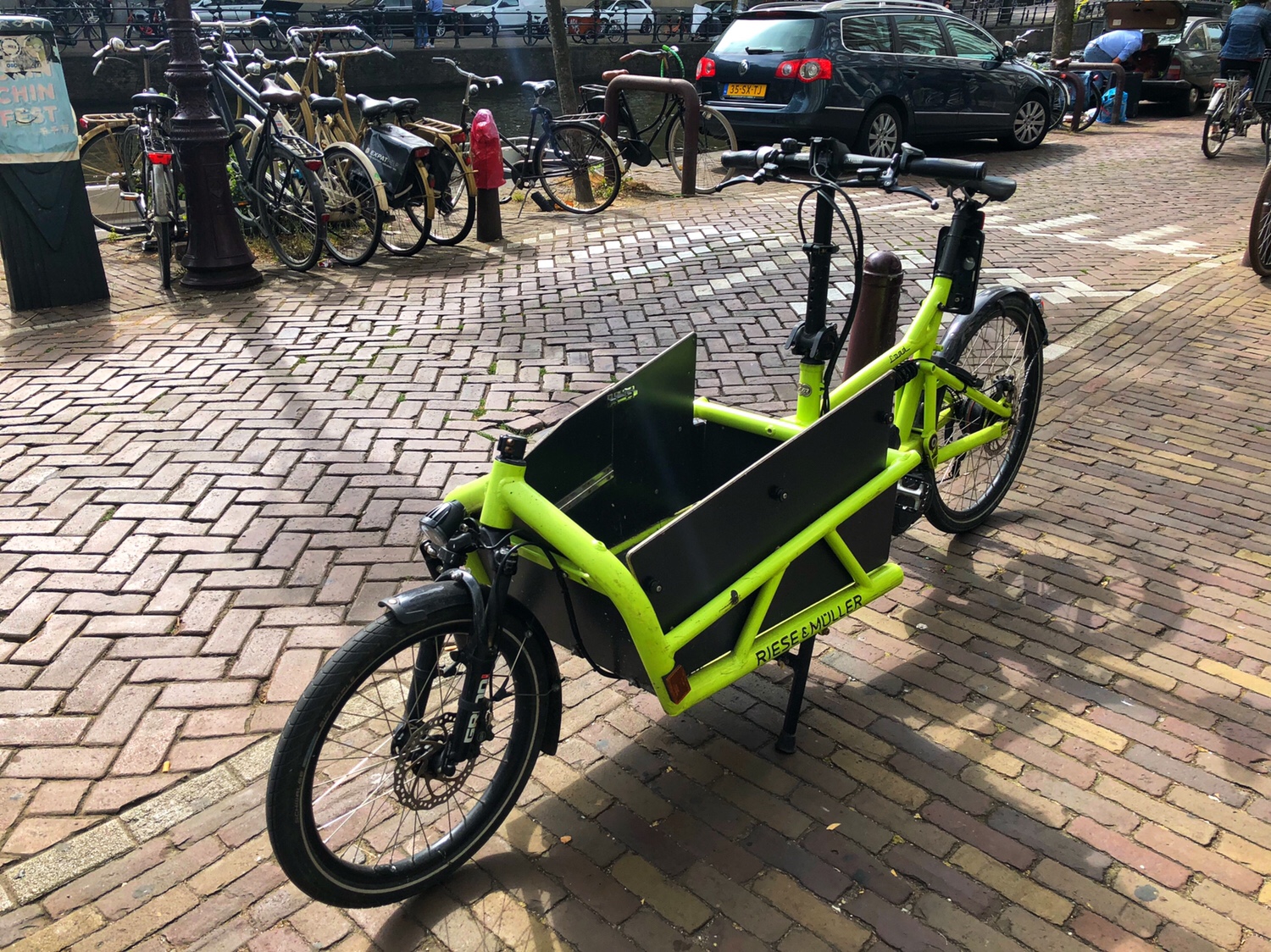







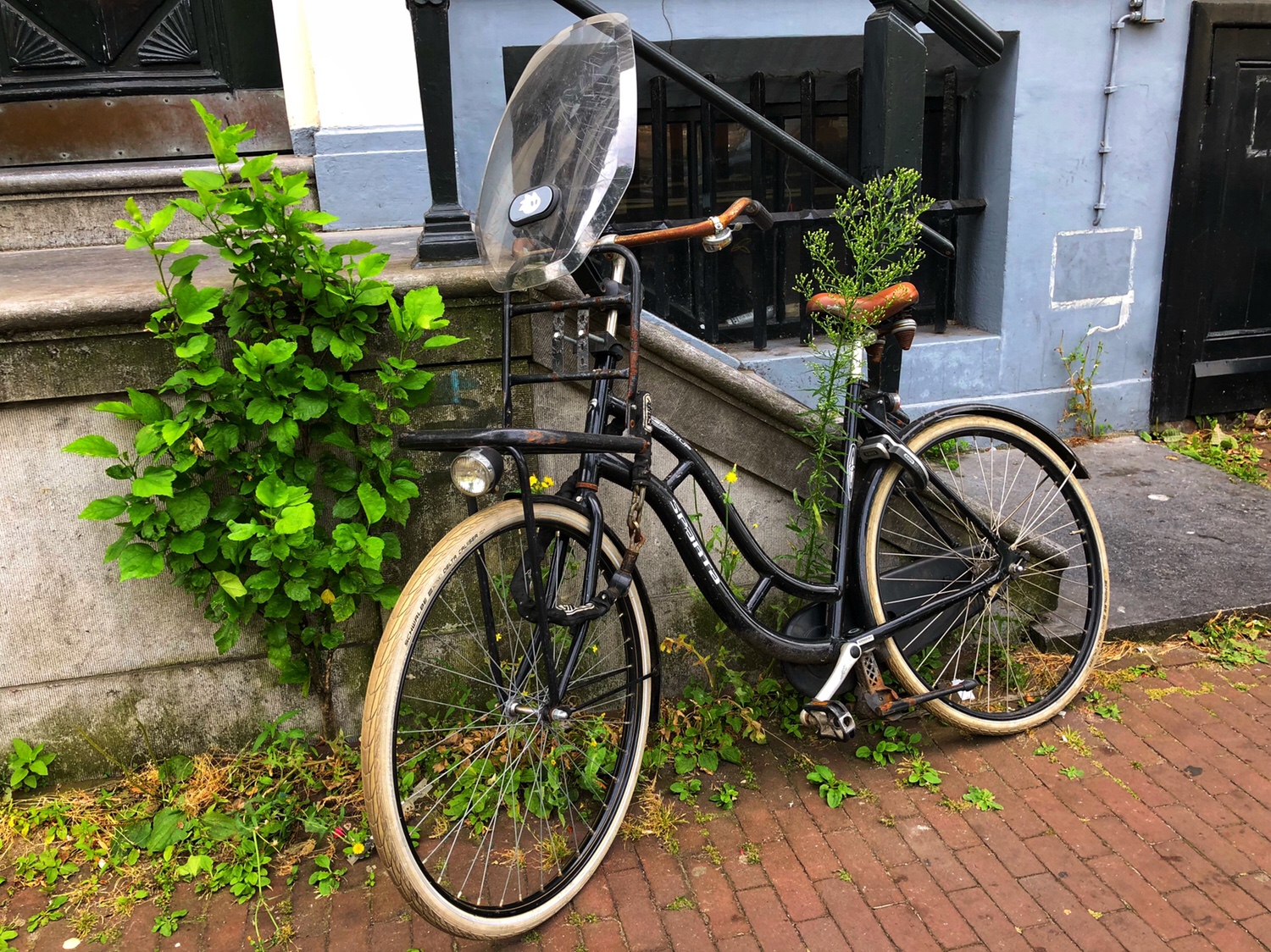
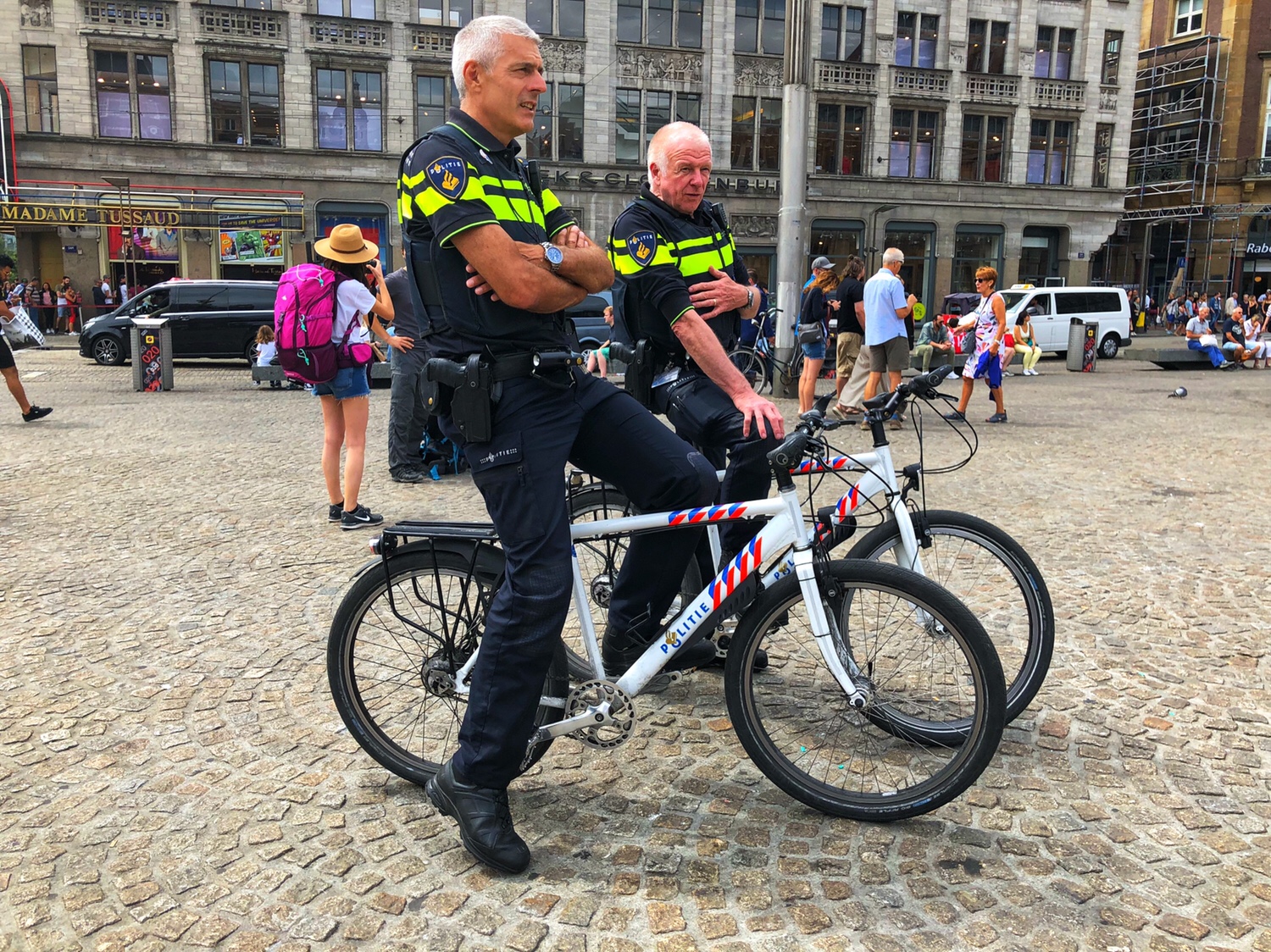
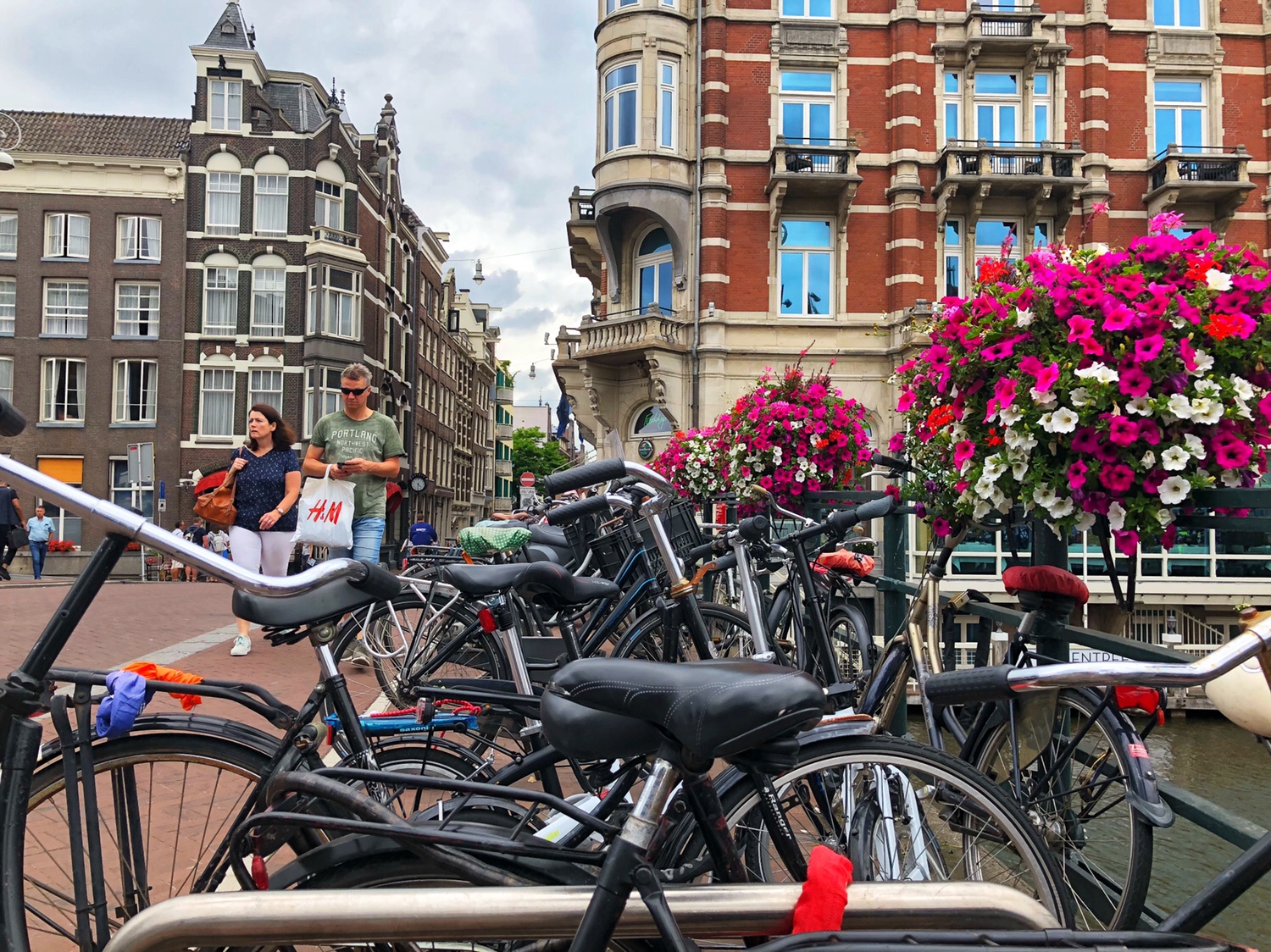
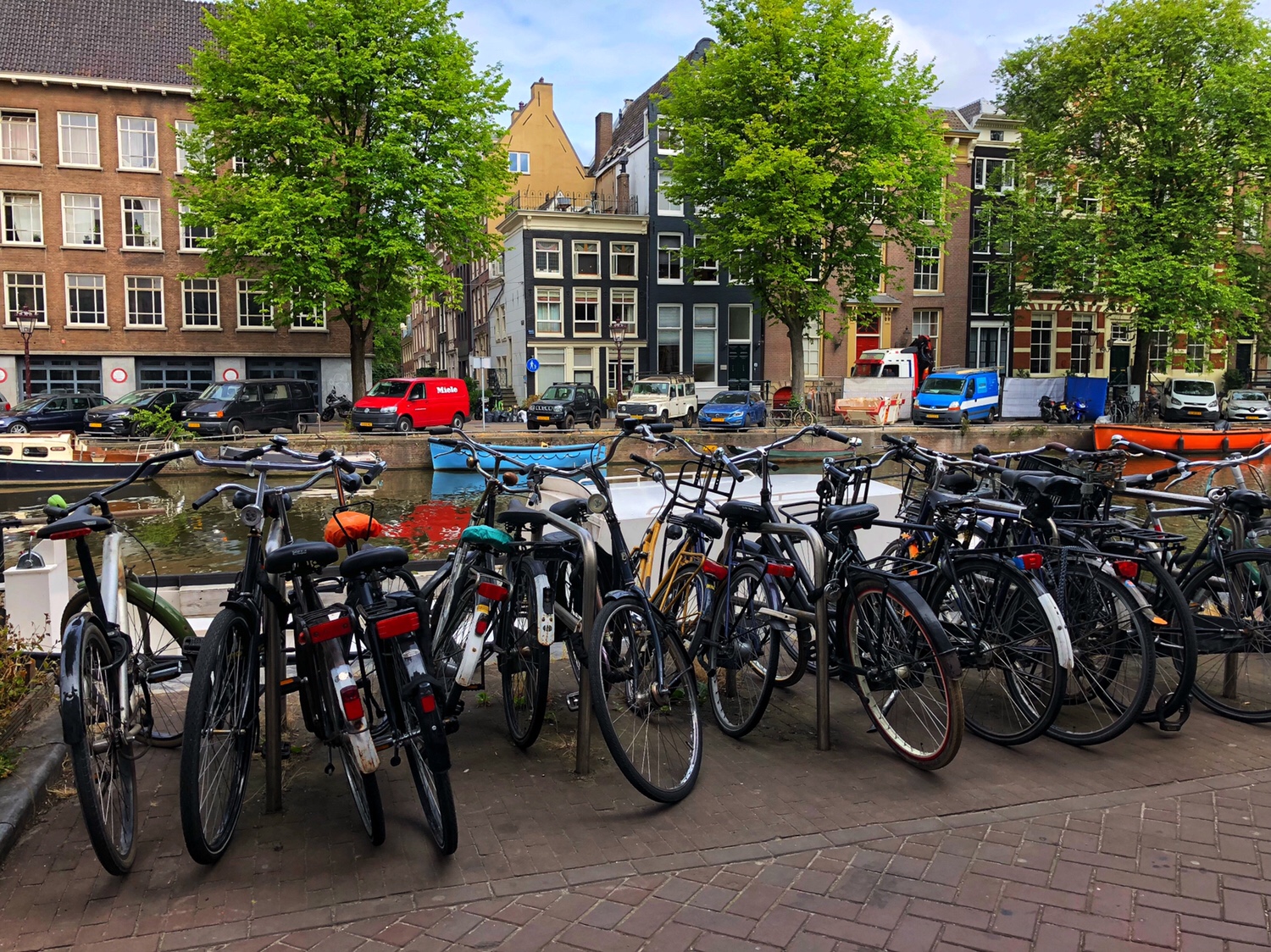
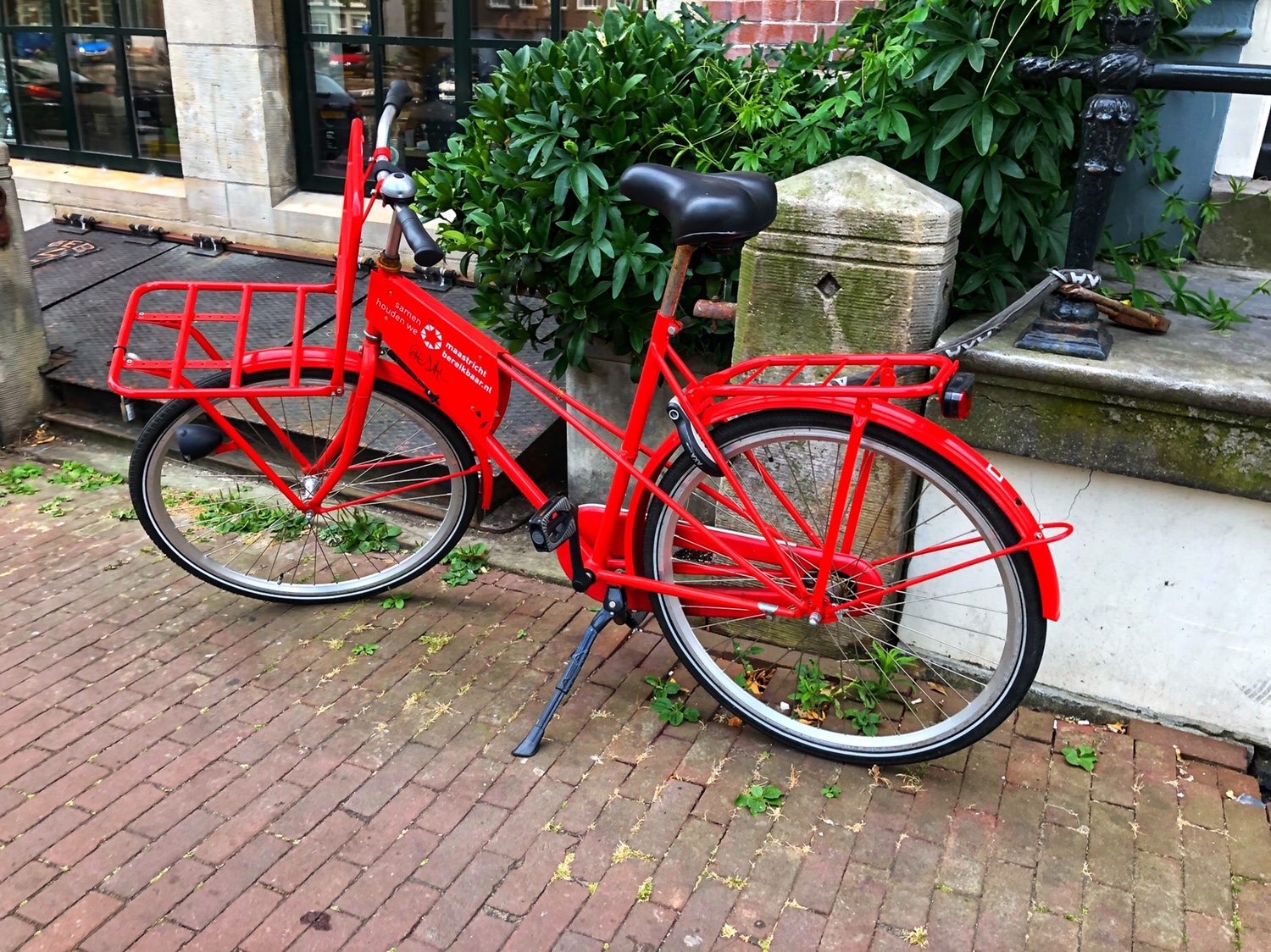



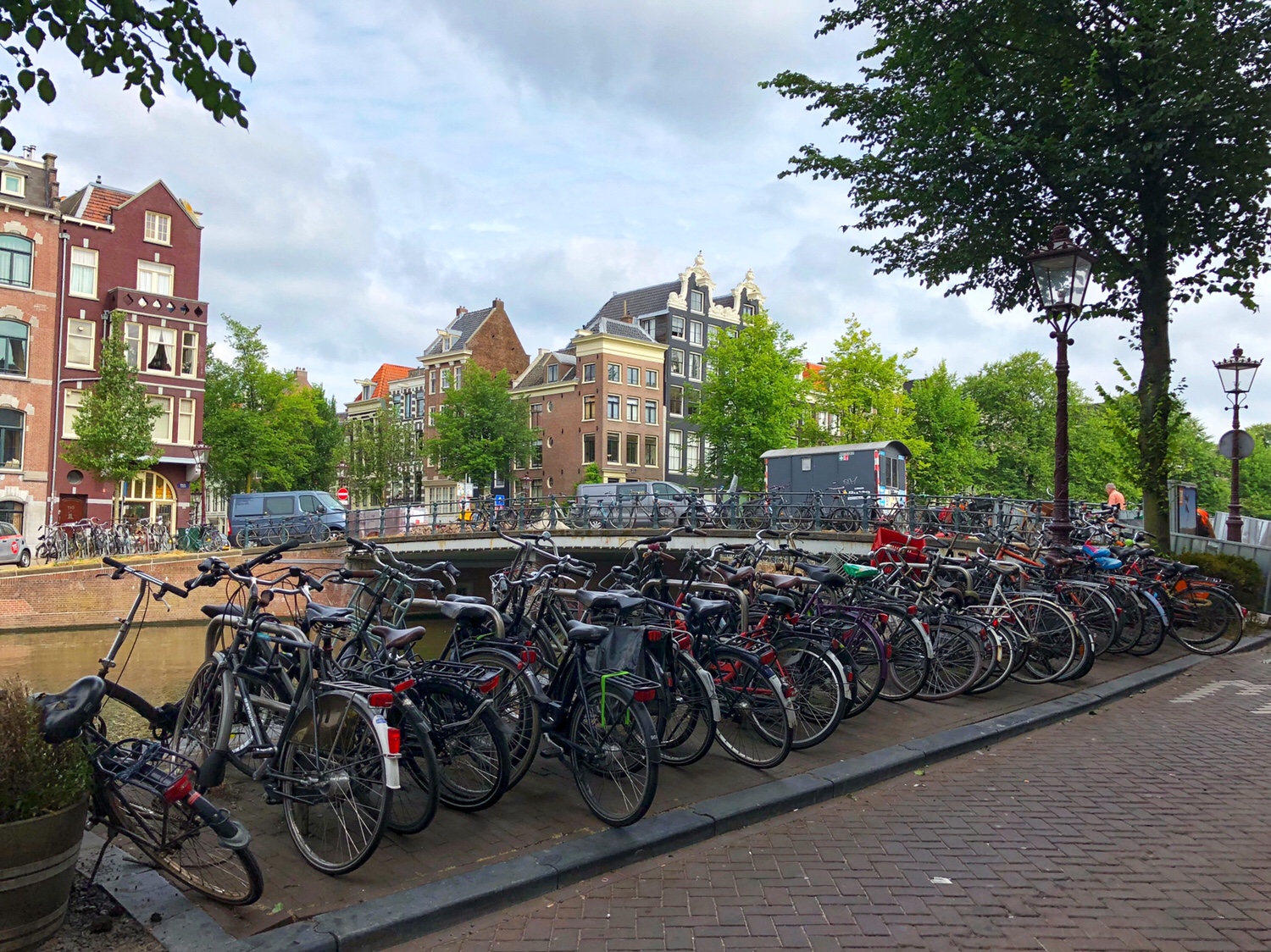


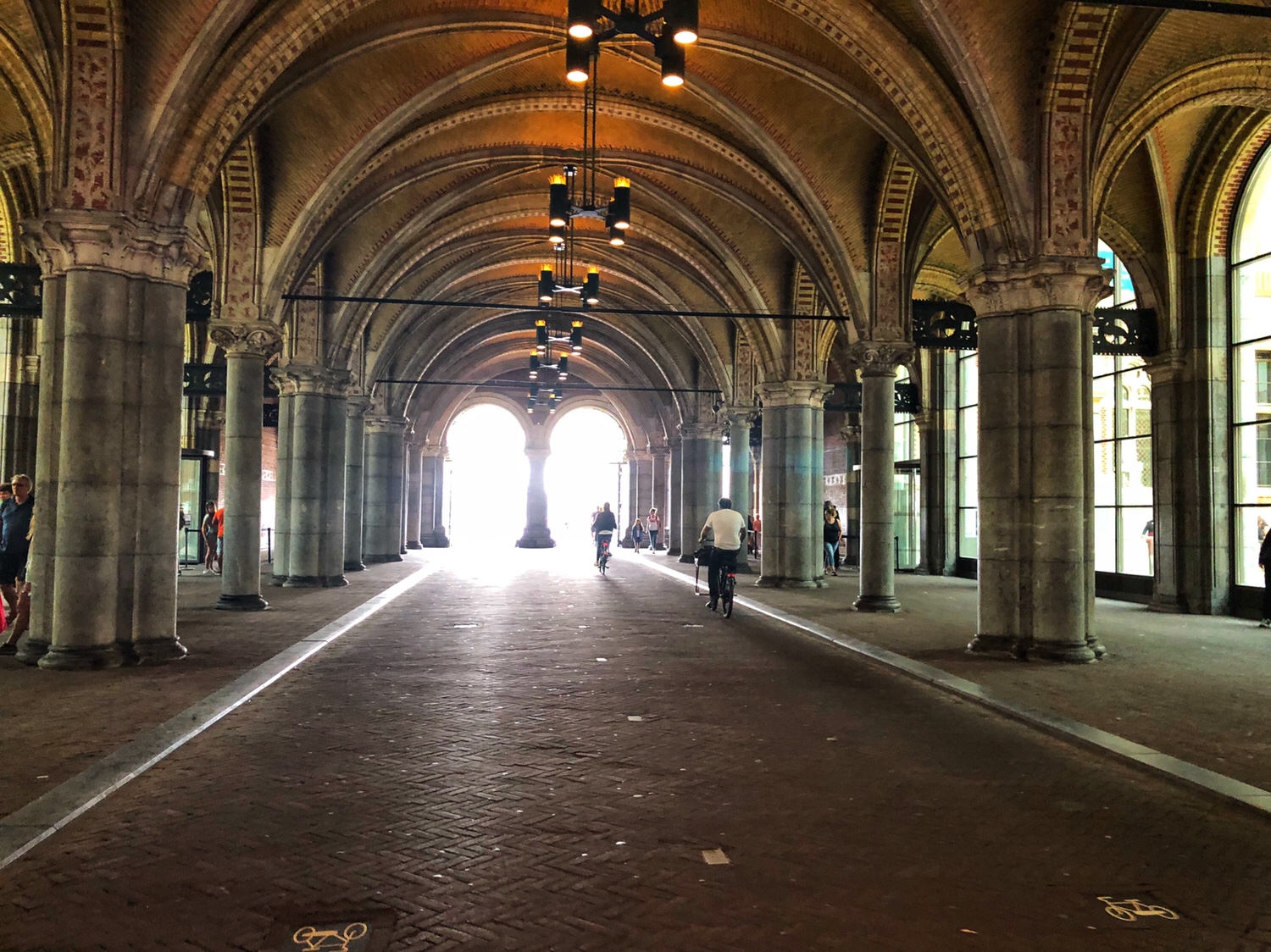
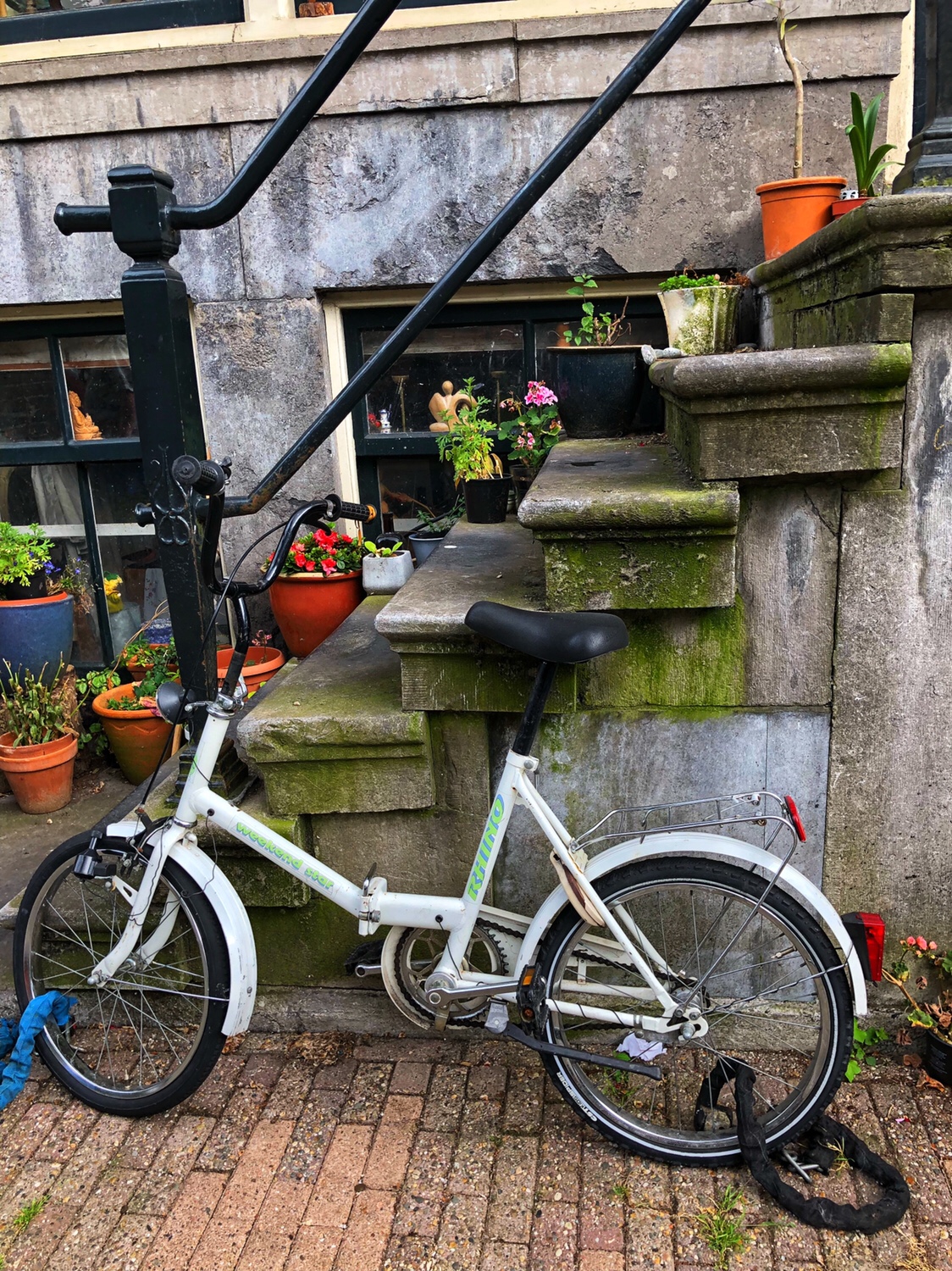
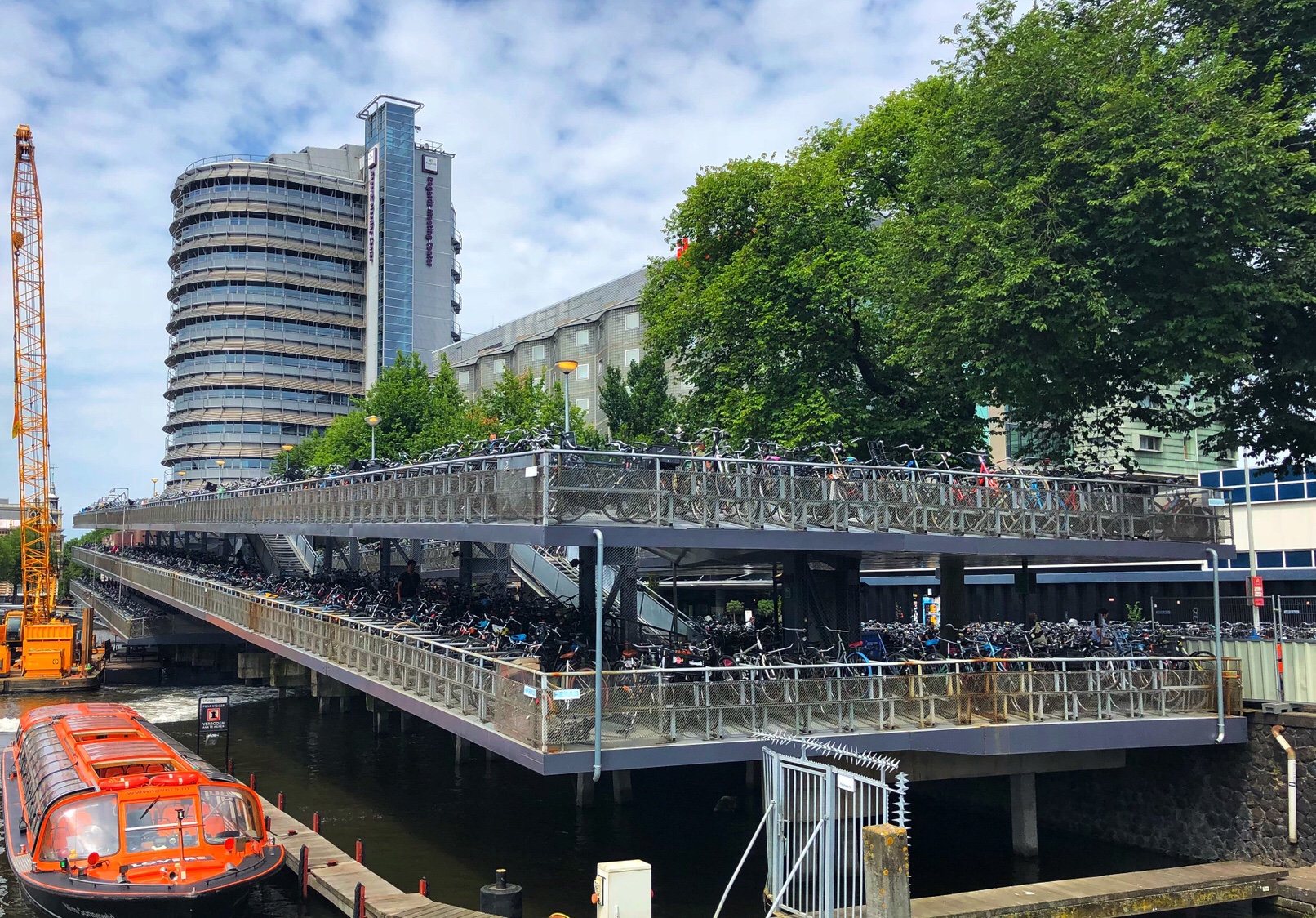
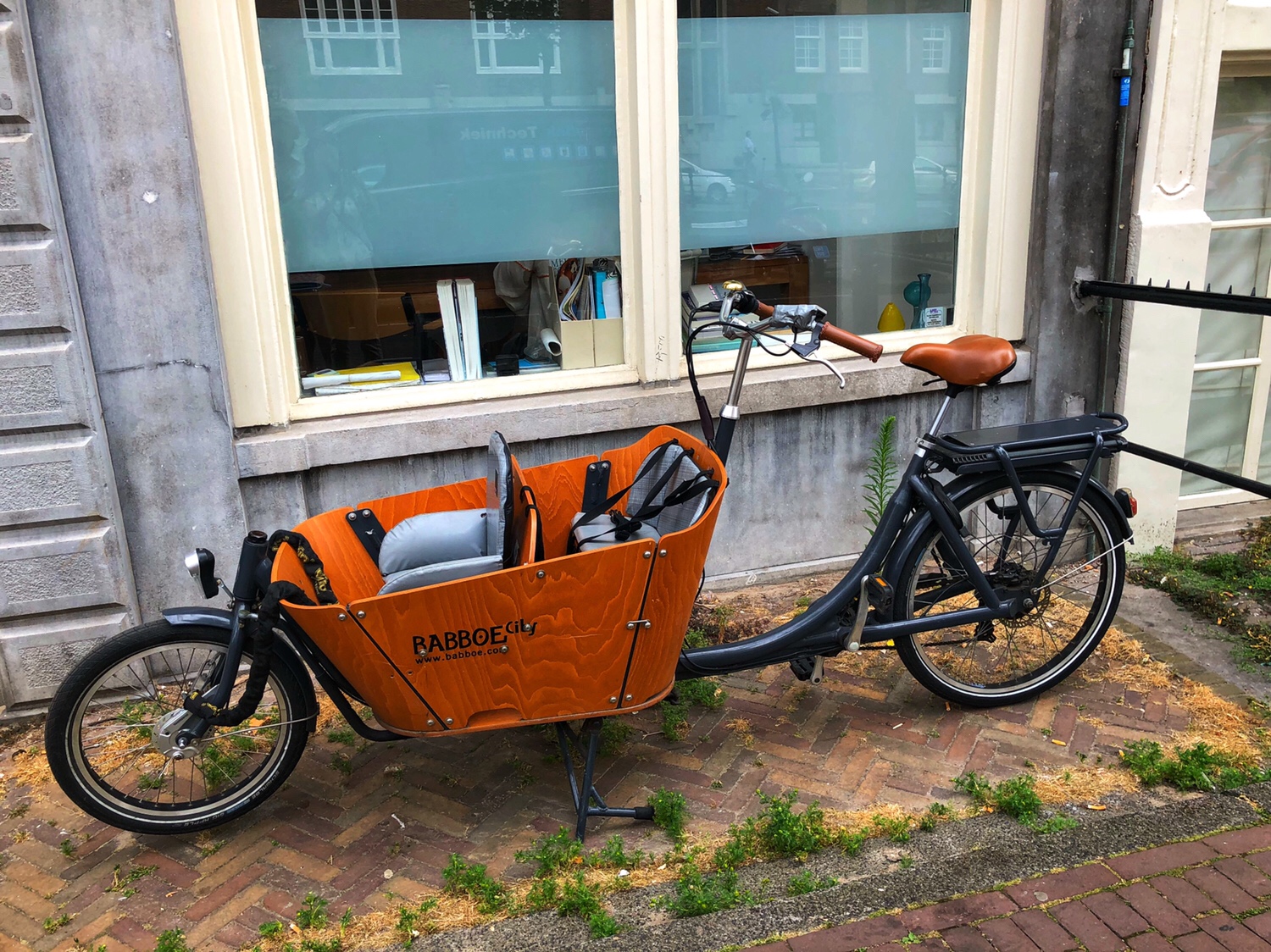
看够自行车了吧?看一下阿姆斯特丹独特的建筑吧。
最瘦的房子
阿姆斯特丹的房子都很瘦窄,是因为15世纪的时候,这里的土地规划政策很严格,房产税是根据房子的宽度而征收的,所以房子都被建的有很瘦窄的,但是房子内也许会很深。这也成了阿姆斯特丹建筑的一个特色。 今天早上我俩去看了最窄的房子。 哈哈,是的,那个7号就是最窄门面的房子,门面只有一扇门的宽度。
Had enough of the bikes, right? Let’s take a look some of the unique architecture of Amsterdam.
The Narrowest House
Some of the houses in Amsterdam are very narrow partly because in the 15th century, the land planning policy was very strict. Property tax was levied based on the width of the front of the house, so often the house was built with a very narrow facade. But behind the facade there might be a spacious house; this is a key feature of Amsterdam architecture. We went to see the narrowest house this morning.
Haha, yes see below, number 7 is the house with the narrowest facade, the front has only the width of one door!
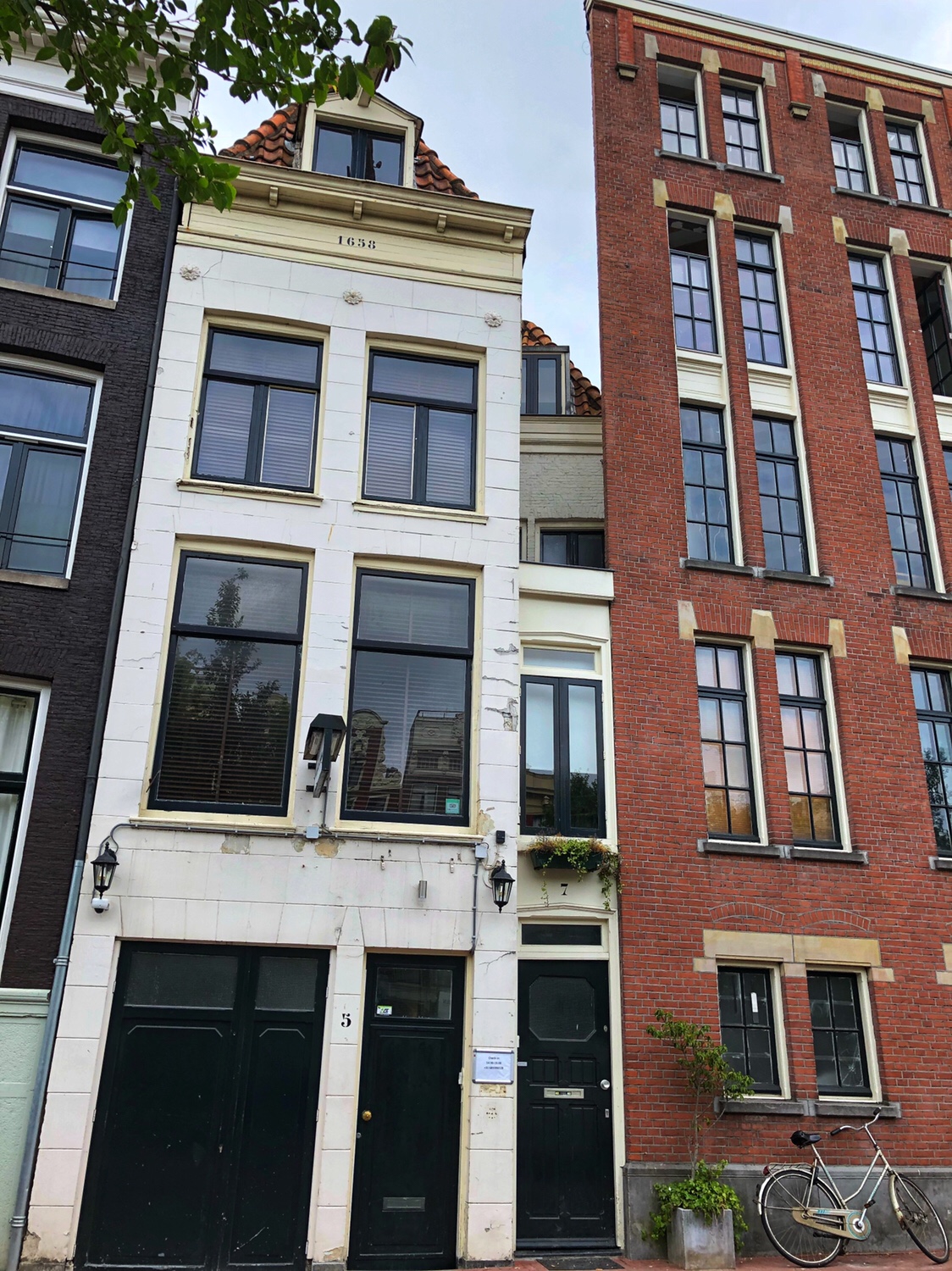
由于很多房子很瘦窄,而且楼梯也窄而陡峭(当然大多数都没有电梯啦),很多房顶都有一个木梁和勾子用来帮助搬家。
Since many houses are very narrow and the stairs are also very steep (most of them have no elevators), many roofs have wooden beams with hooks for lifting furniture up to help when moving.
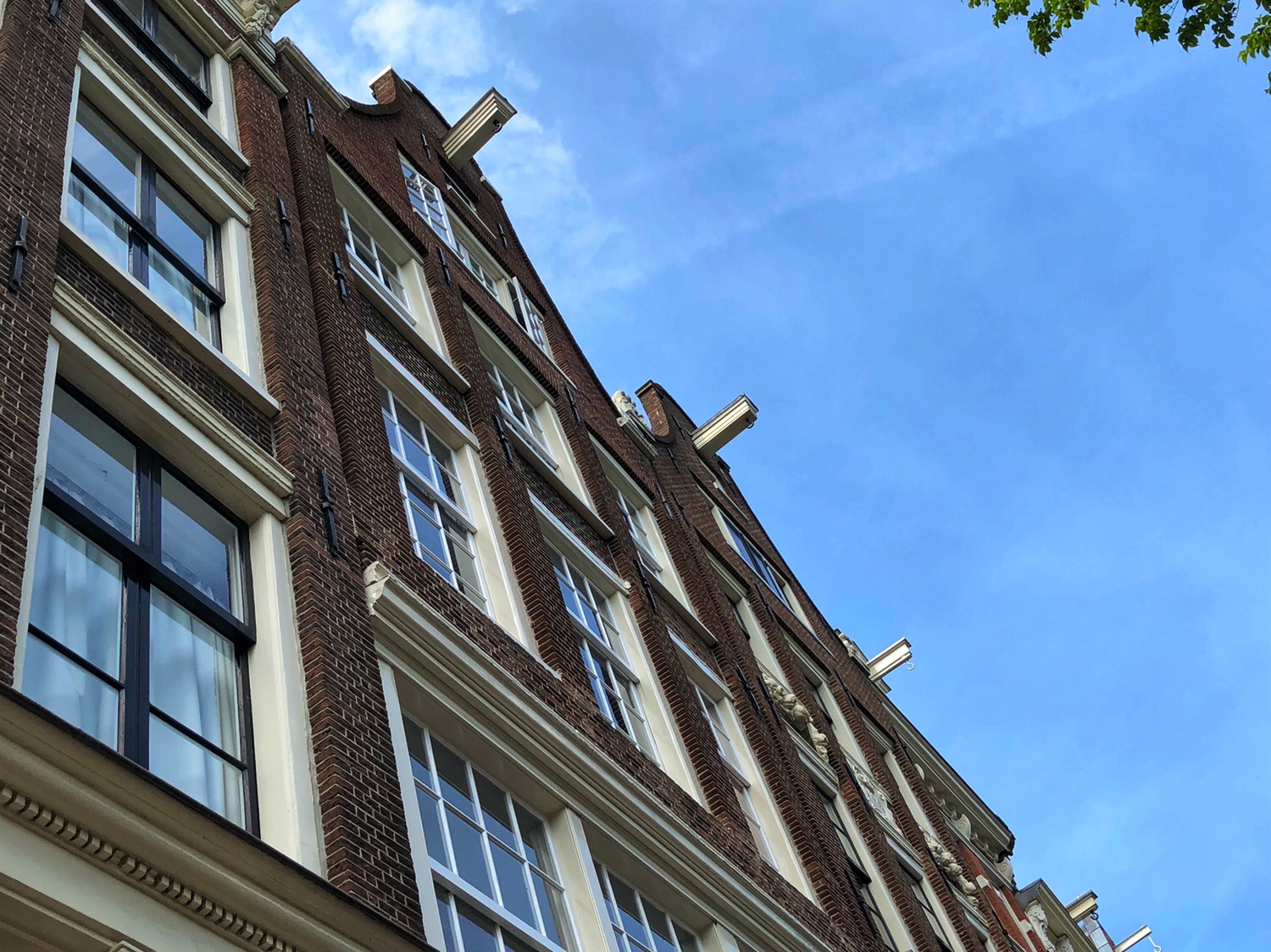
看下面的照片,仔细看那些房子 . Look carefully at the houses in the photos below … notice anything?
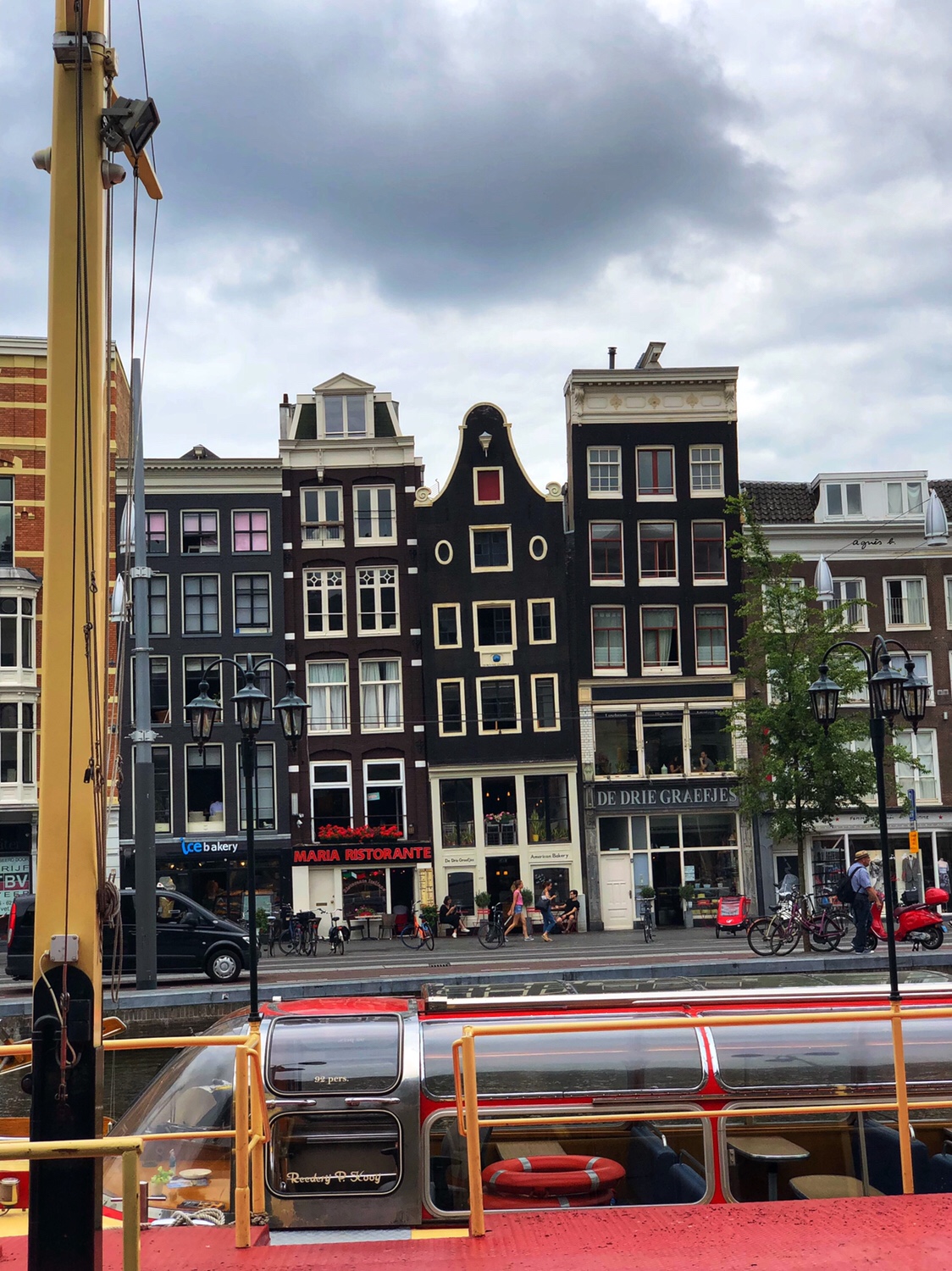

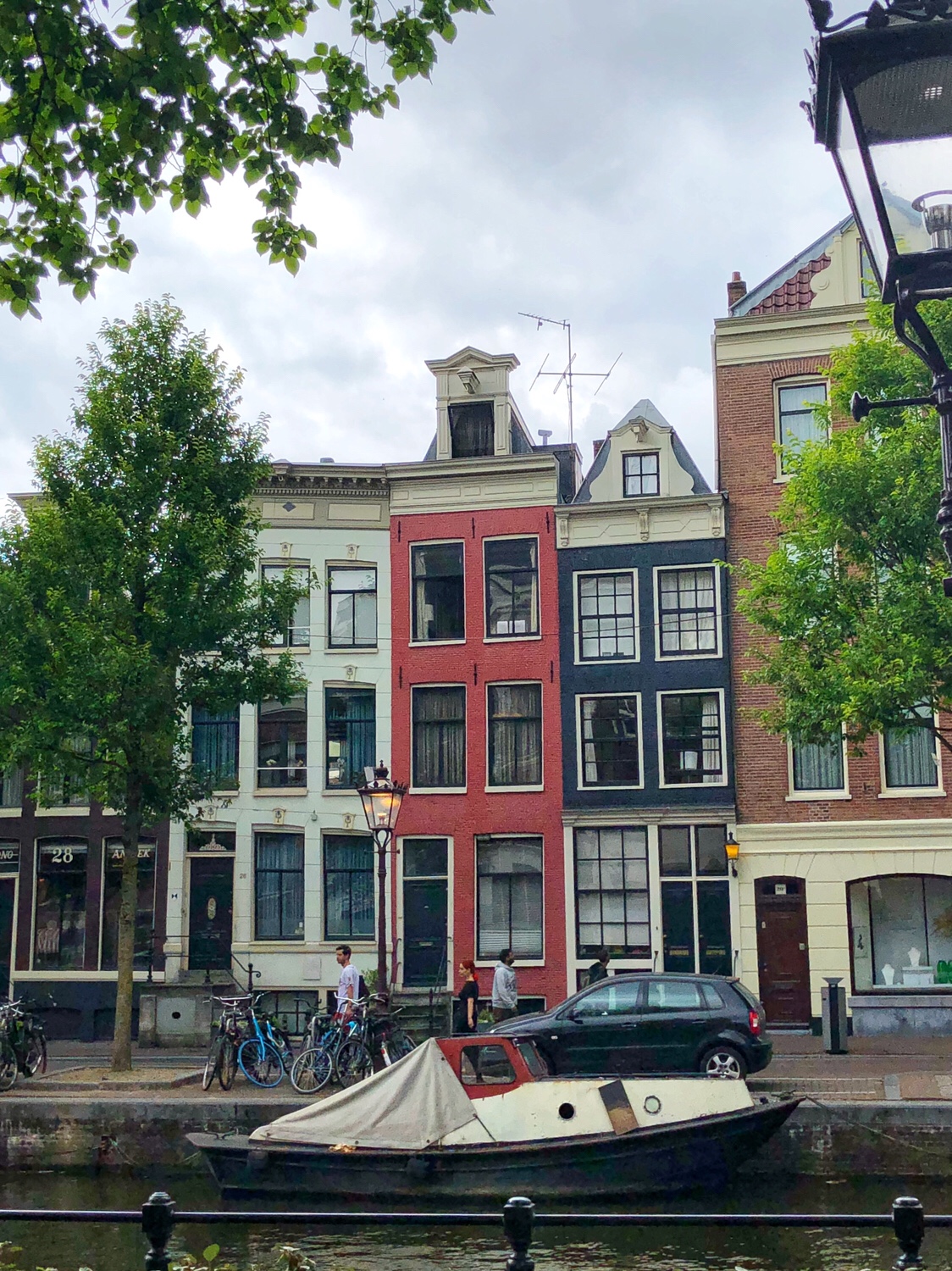
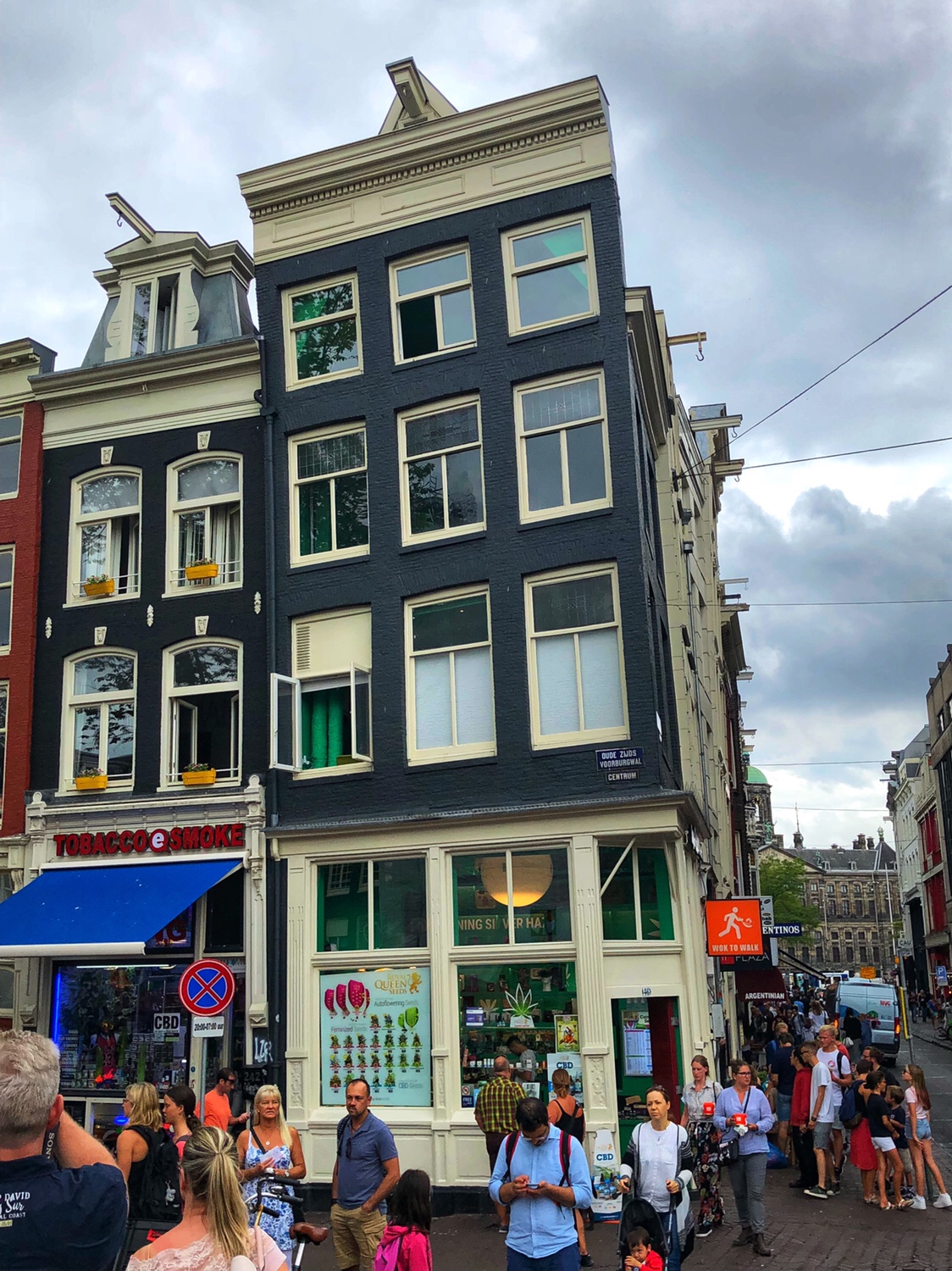
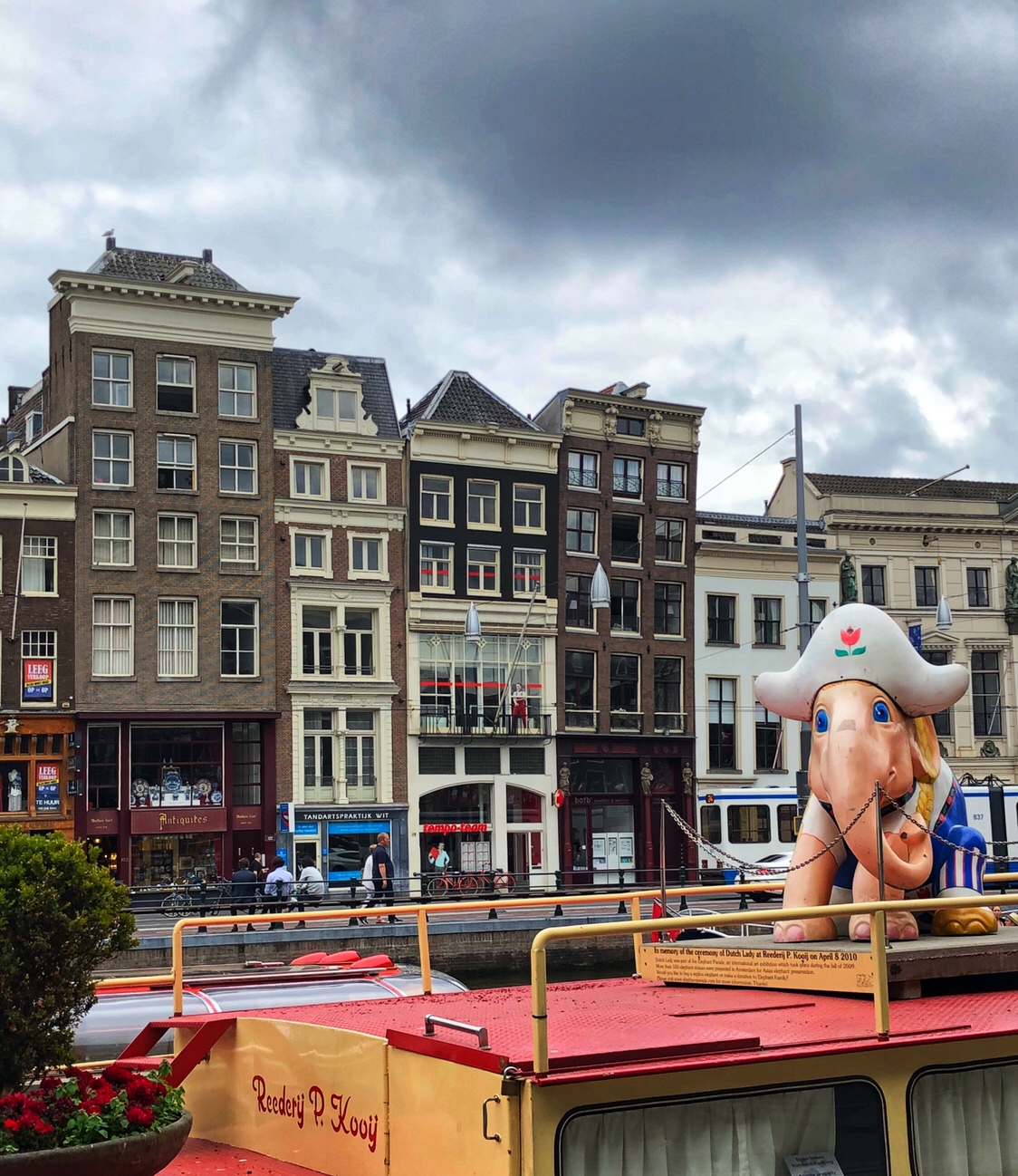
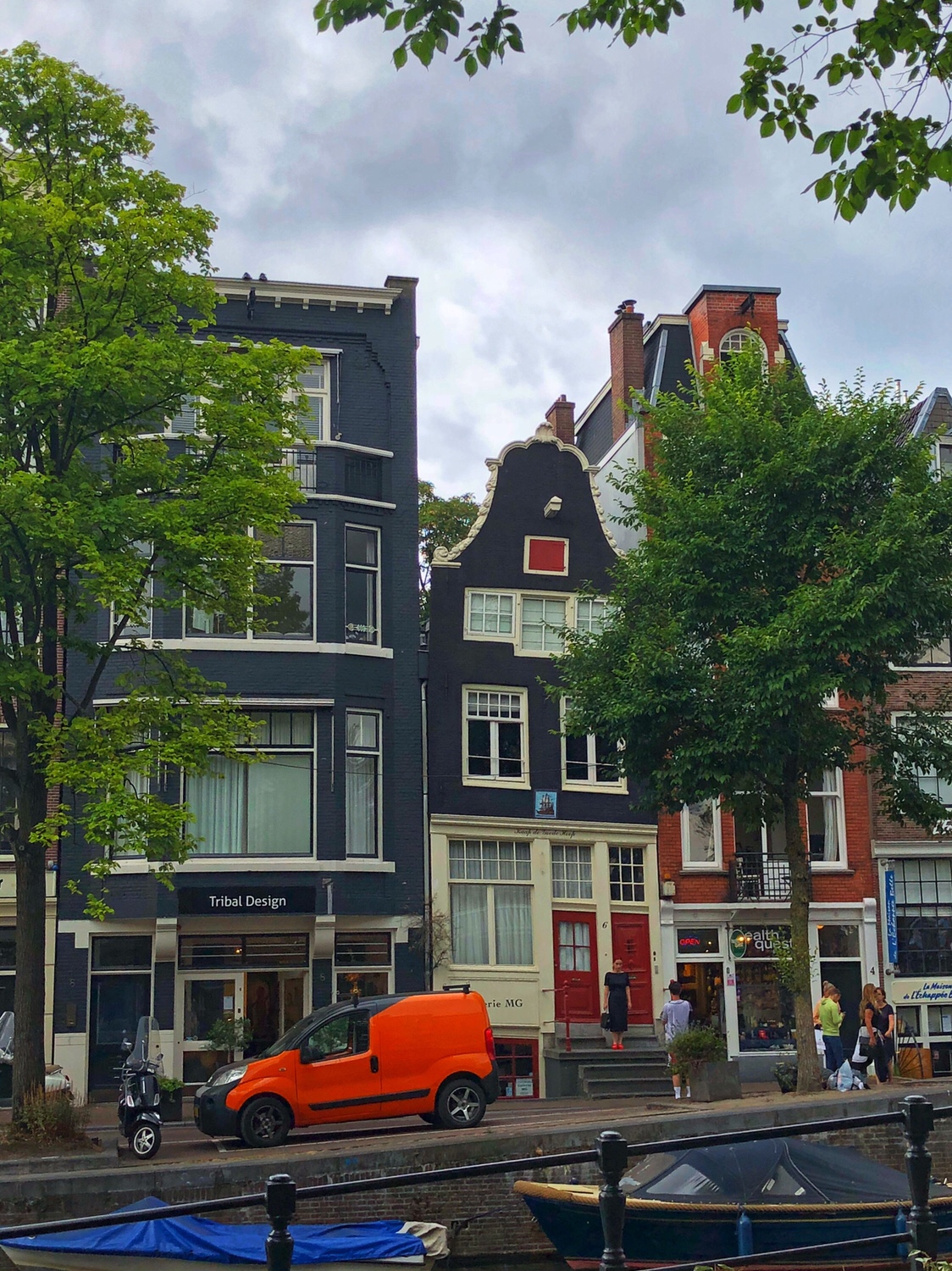
是的,你没有喝醉,你没有眼花,你也没有吃了太多阿姆斯特丹的大麻产品,那些栋房子是倾斜的! 或向左,或向右,或向前,照片似乎并不能准确的展现那种倾斜。 很显然的,只要你来到阿姆斯特丹,就会注意到这些倾斜的房子,很多旅游书籍和网站也都有倾斜原因的解释,仔细在网上了一下,其实市面上有很多理论来解释。比如整个阿姆斯特丹是建在水上的,地基不牢固的原因;比如旧时建房子用的木制支撑房柱子开始腐烂;比如以前的房子建的都是一个挨一个互相支撑,但是一旦角落的房子开始倾斜,其它的房子也开始倾斜;再比如房子向前倾斜是故意为之?直到19世纪开始,阿姆斯特丹的建筑规定里要求所有的房子都要向前倾斜,甚至标明了要倾斜多少。 总而言之,这些倾斜的房子看似危险,其实安全,而且政府也在紧密关注那些存在危险的房屋。
No, you are not drunk, you don’t need glasses, you haven’t had too much of Amsterdam’s marijuana – those houses are tilted! To the left, or to the right, or forward – the photos really don’t accurately show how much they tilt. Obviously, as soon as you come to Amsterdam, you will notice these tilted houses. Many travel books and websites also have explanations for the reasons for the tilt. In fact, there are many theories to explain the tilt. For example, the whole of Amsterdam is built on water, which explains why the foundation is not strong. Also, the wooden support pillars that were used to build houses in the old days and have begun to rot. Another theory is that the previous houses were built with one side using another house to support each other, but once the corner of the house began to tilt, other houses also starting to tilt in unison.
However, the forward lean of some of the houses is actually deliberate. Up until the 19th century, Amsterdam’s architectural regulations required all houses to lean forward and even specified how much to tilt. You can read more about this on your own.
Although these sloping houses seem dangerous, they are in fact safe. The government is paying close attention to the few houses that are dangerous.
梵高博物馆
穿梭完大街小巷,我俩去了预定好的梵高博物馆。梵高就出生在荷兰,很高兴这次的能更多的了解梵高和看一些他早起的作品。可惜的是这里不允许拍照片。这里展出了很多梵高的自画像,我从音频导航里了解到他之所以画了很多自己是因为他没有钱雇佣模特,而且他很多的自画像里眼睛的颜色都不同,是因为他想练习用颜色表达表情和情感。
他大胆的用色, 独特的笔触,和他独有的看待他的作画对象的视角,使他成为后印象派的典型代表。梵高说他不在乎事物的实际颜色,所以这能使他自己在眼前的事实中解放,用自己的观察世界的方式来展现平凡的美感。 这也给了所有看他画作的人有所启发,是否我们都有自己独特的视角来看待周围的事物?
Van Gogh Museum
After we explored the streets and canals of Amsterdam, we went to our scheduled time slot at the Van Gogh Museum. Van Gogh was born in the Netherlands, and I am very happy to learn more about Van Gogh and see some of his early works. It is a pity that photos were not allowed here. I have seen a lot of self-portraits of Van Gogh, he did many. I learned from the self guided audio tour that he painted a lot of himself because he had little money to hire models, and many of his self-portraits use different colors for his eyes because he wanted to practice using color to emphasize expressions and emotions.
His bold use of color, unique brushstrokes, and his unique use of perspectives on his paintings made him an influential representative of post-impressionism. Van Gogh said that he does not care about the actual color of things, which can free him from the subject he is painting and use his own way of observing the world to show its ordinary beauty. His way of seeing the world inspired all those who saw his paintings. Do we all have our own unique perspectives on the things we see around us?
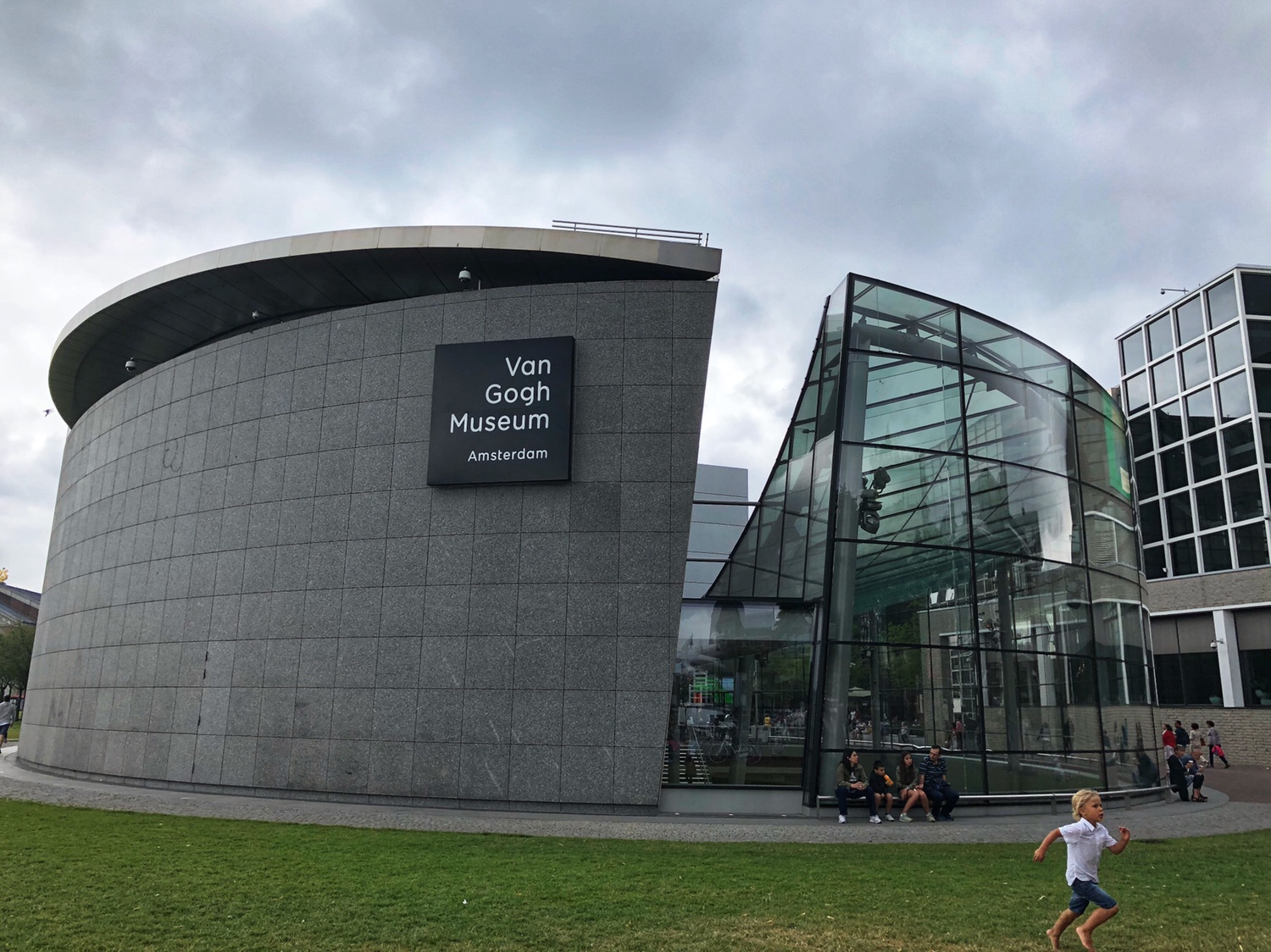
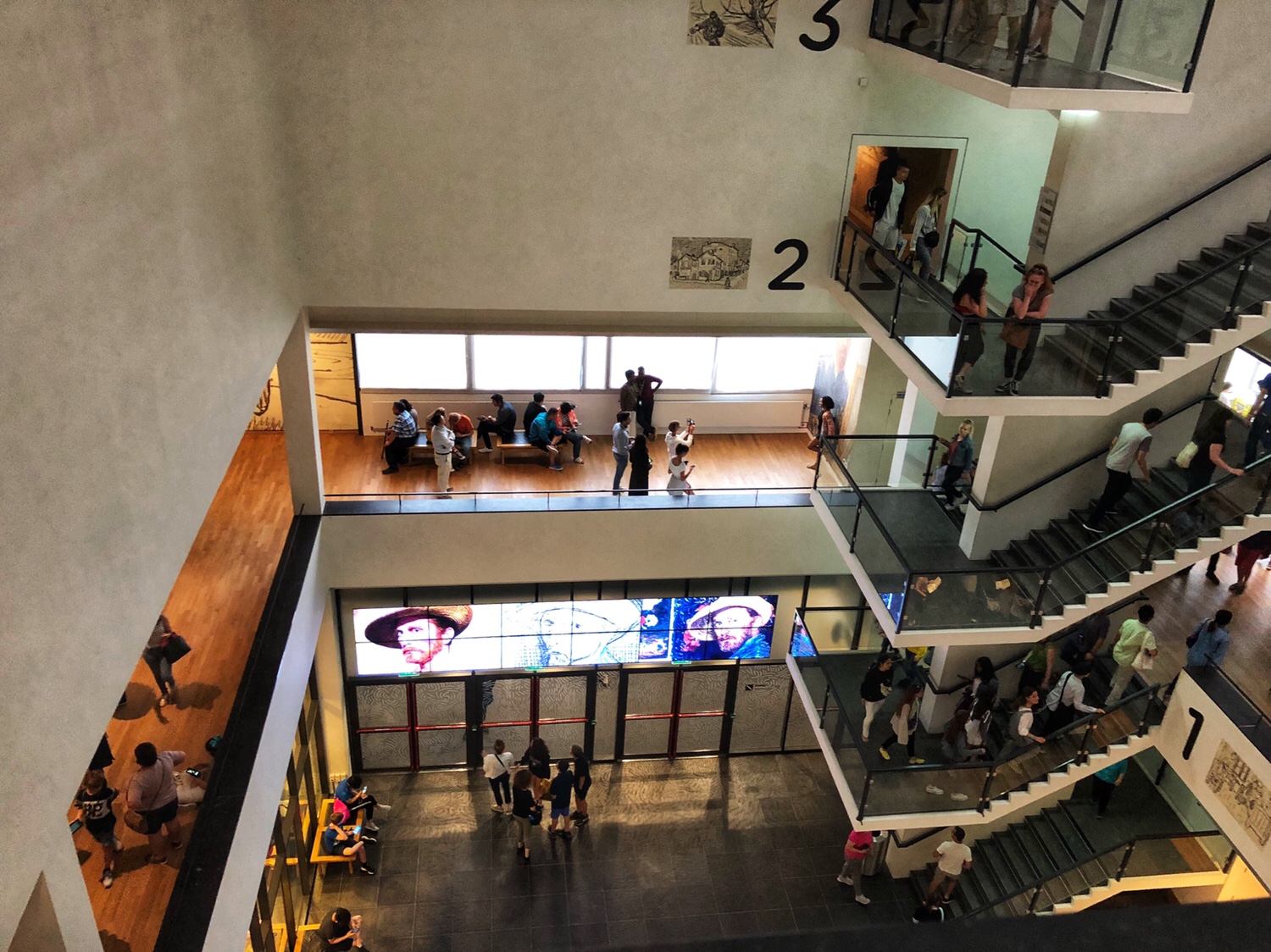
展出中一幅他在自杀前画的几幅画作之一的“麦田”是我最喜欢的, 看着那幅画,我真切地能感受到那无尽的孤独感,画作其实用了很多鲜艳的颜色,红色, 绿色, 红色,蓝色,黑色,这些颜色其实会然人感觉热血沸腾,但是我却感受到了梵高传达的那种广阔无垠的悲伤。
One of the few paintings he painted before his suicide was the one that I liked the most. Looking at the painting below, I can really feel the endless loneliness. The painting is practical and is very vivid. His bold use of yellow, red, green and blue, normally would give a lively feeling, however, I feel this is how Van Gogh conveyed his vast innocent sadness.



阿姆斯特丹的自行车有特色。环境污染少,空气一定不错。房屋建筑也挺有意思。